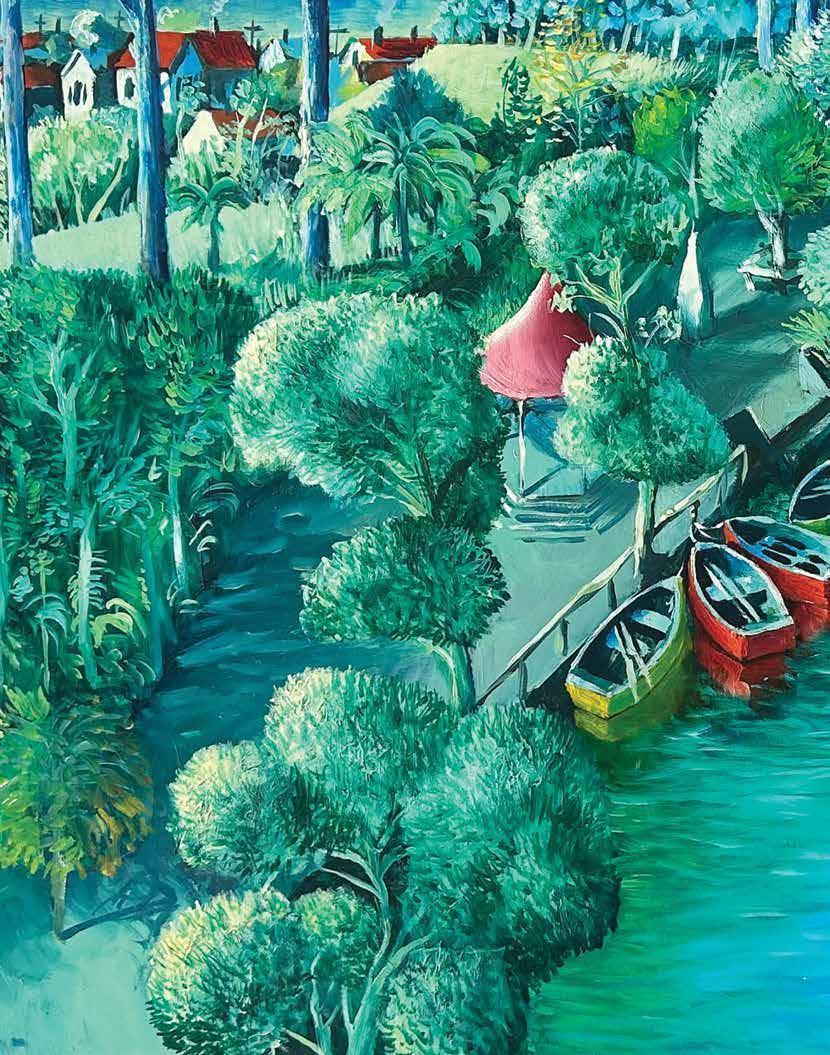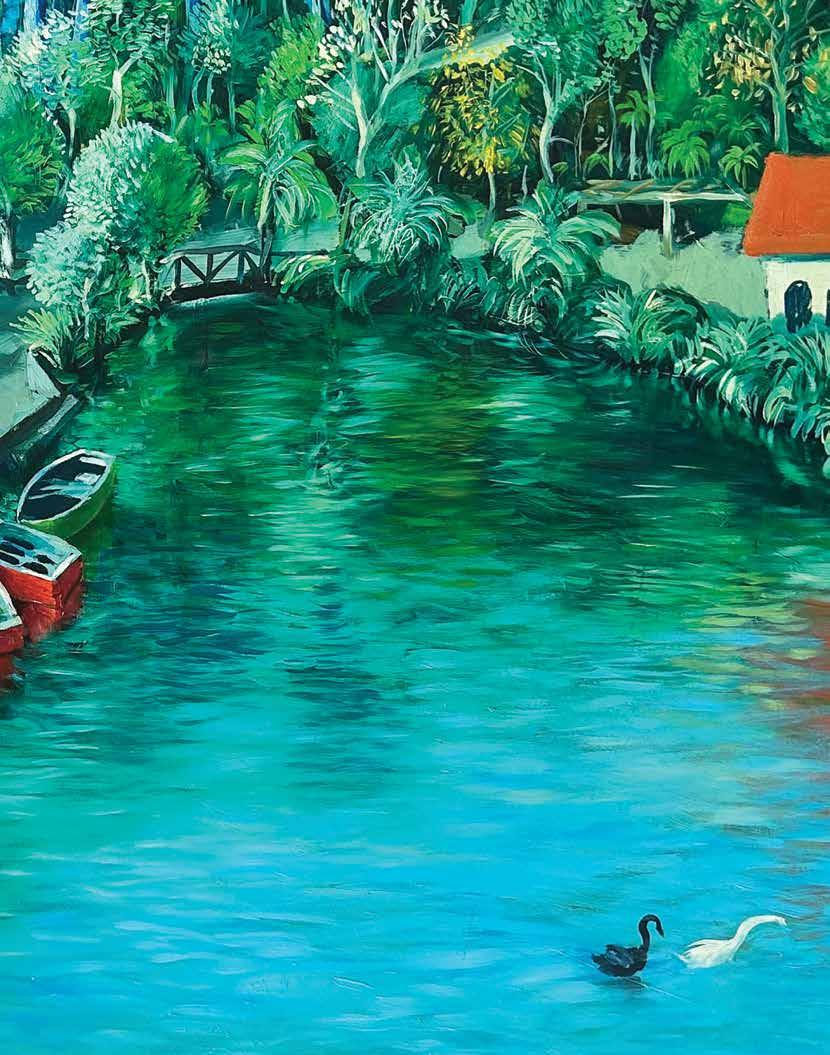
Auction 6:00pm Tuesday 30 July 2024






Auction 6:00pm Tuesday 30 July 2024




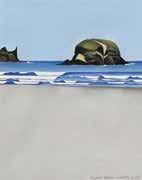
CHARLES FREDERICK GOLDIE (1870 - 1947)
Memories, Rakapa, an Arawa Chieftainess
Oil on canvas 19 x 15
Signed & dated 1911
Realised: $553,776
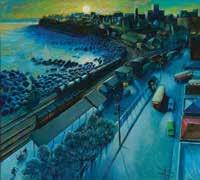
PETER STICHBURY (b. 1969)
Natalie
Acrylic on linen 71 x 55.5
Signed, titled & dated 2004 verso
Realised: $57,660
Selected auction highlights from our 2024 auction calendar
CONTACT auctions@artcntr.co.nz
ROBIN WHITE (b. 1946)
Allan’s Beach
Watercolour and acrylic on paper 28 x 22
Signed, inscribed & dated 1975
Realised: $31,232

MICHAEL SMITHER (b. 1939)
Composition - Railway, 1967
Oil on board 108 x 120
Signed lower right M.D. Smither & dated 67
Realised: $258,268
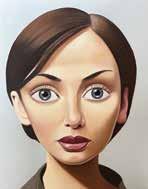

PAULINE YEARBURY (1926 - 77)
Wake up Saint Francis
Incised Wood Panel 60.5 x 22.5
Signed
Realised: $30,031
ARTIST RECORD
PAULINE YEARBURY (1926 - 77)
St Francis, Tobias and Friends
Incised Wood Panel 60 x 22
Signed Realised: $28,830
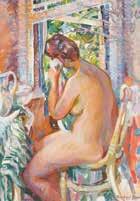
MARTI FRIEDLANDER (1928 - 2016)
Eglinton Valley, 1970
Gelatin silver print 21 x 27.5
Realised: $24,025
ARTIST RECORD
STAR GOSSAGE (b. 1973)
Ao Tahi, First Light
Oil and studio detritus on board 80 x 120
Signed & dated 2009
Realised: $48,050
ARTIST RECORD


EVELYN PAGE (1899 - 1988)
Young Woman in a Bay Window Oil on canvas on board 75 x 51.2
Signed
Realised: $174,181
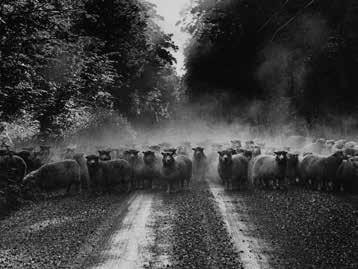

Please join us at 11am Wednesday 24 July for auction preview and talk by Francis McWhannell, Curator of the Fletcher Trust, who will discuss key highlights from our forthcoming auction. RSVP auctions@artcntr.co.nz
TUESDAY 30 JULY 2024
6pm Tuesday 30 July International Art Centre 202 Parnell Rd, Parnell, Auckland
Richard Thomson richard@artcntr.co.nz
Grace Alty gracealty@artcntr.co.nz
Luke Davies luke@artcntr.co.nz
Grace Harris grace@artcntr.co.nz
Wednesday 24 July 9.30 am - 5.30pm Thursday 25 July 9.30 am - 5.30pm
26 July 9.30 am - 5.00pm
27 July 10.00 am - 4.00pm
Directors Richard Thomson & Frances Davies 202 Parnell Road Auckland New Zealand
Telephone +64 9 379 4010 Toll Free 0800 800 322 www.internationalartcentre.co.nz
Allocated parking located directly behind International Art Centre. Further parking at St John’s Carpark, entry at 244 Parnell Road, 40 metres up from International Art Centre
Upper and lower carparks are available during live auction at rear of International Art Centre. Further parking at St John’s Carpark, entry at 244 Parnell Road, 40 metres up from International Art Centre

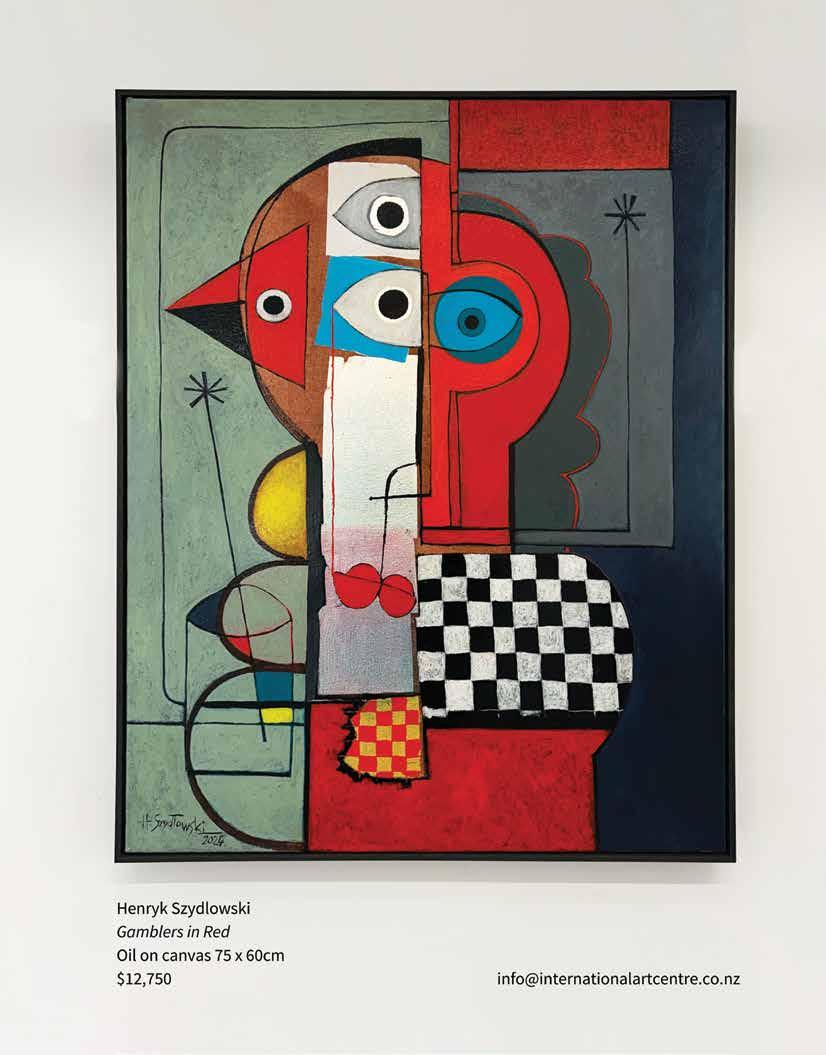

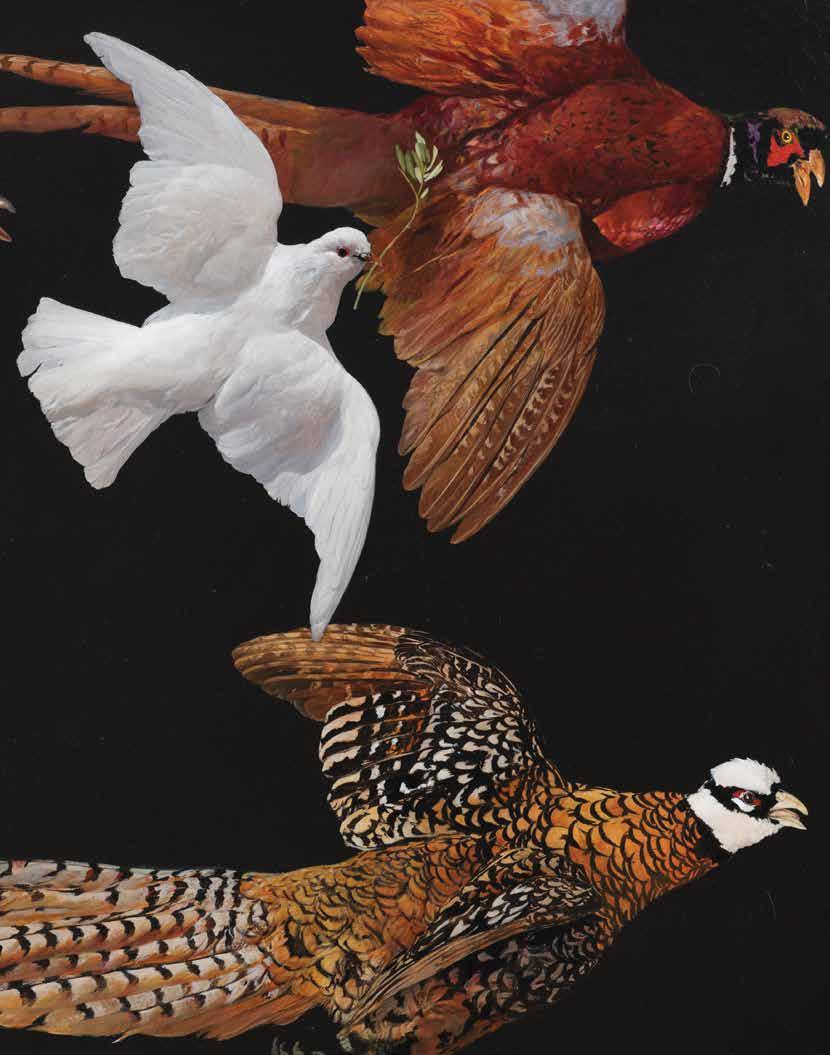
Lot 33
RAYMOND CHING
Pheasants Leave the Ark
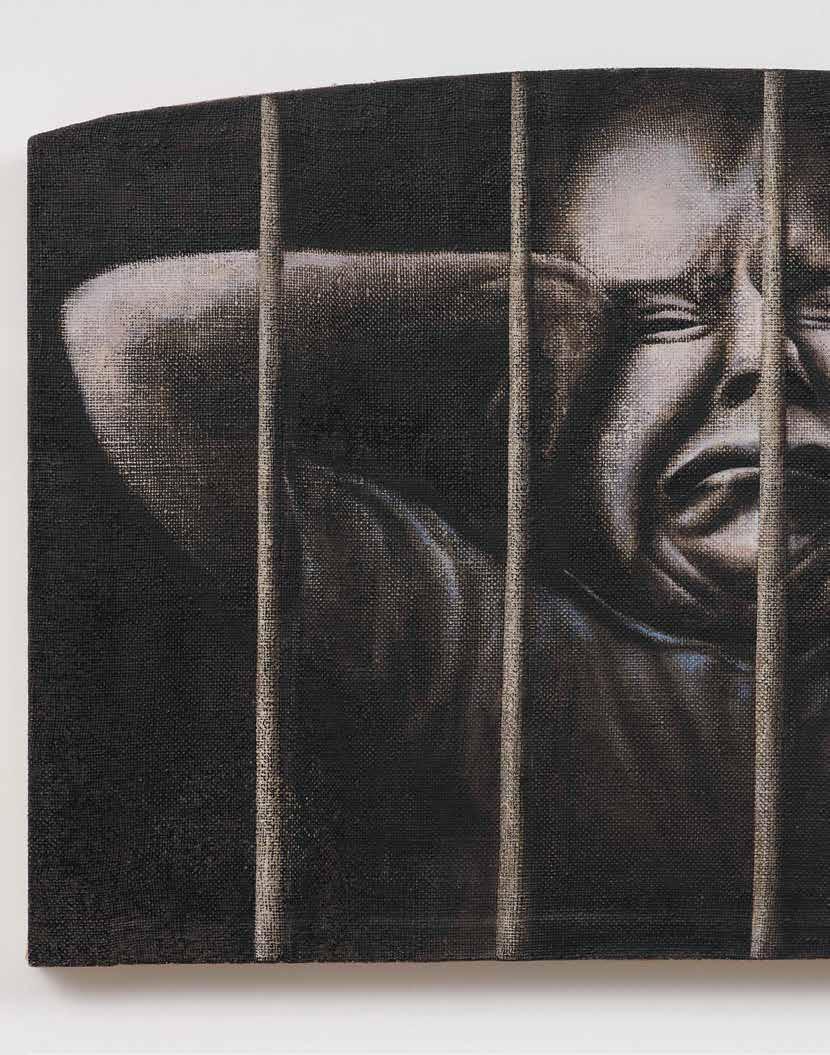
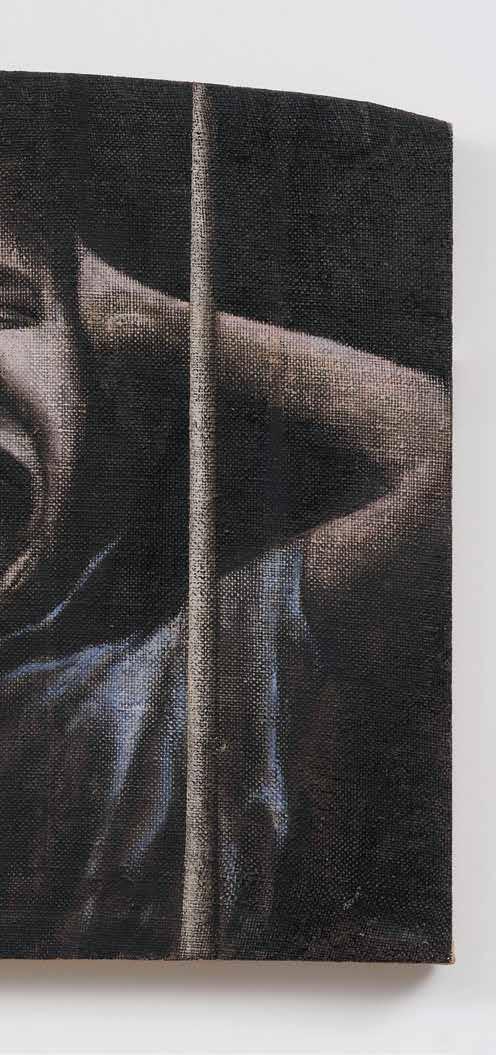
We offer live online as well as in room bidding. For instructions on how to bid please visit our website www.internationalartcentre.co.nz
Should you be unable to attend the auction, you may elect to register an absentee or telephone bid. Please contact us to arrange prior the sale
Visit https://auctions.internationalartcentre.co.nz to register on our online bidding platform
Our bidding platform enables you to browse catalogues, enjoy auctions in real time and place bids from anywhere in the world
18.5% plus GST


01 MICHAEL PAREKŌWHAI (b. 1968)
The Bosom of Abraham
Screenprint vinyl on fluorescent light housing
122 x 22
$20,000 - 30,000
PROVENANCE
Private Collection, Christchurch
Acquired from Gow Langsford Gallery, Auckland
02 STAR GOSSAGE (b. 1973)
Under My Flame Tree
Oil on board 79 x 59
Signed and dated 2012
$25,000 - 35,000
PROVENANCE
Private Collection, Warkworth
Acquired from the artist
EXHIBITED
Five Māori Painters, Auckland Art Gallery
Toi o Tāmaki, 14 February - 15 June 2014
03
ROBYN KAHUKIWA (b. 1938)
E kore e hekeheke, he kākano rangatira, A Noble
Heritage Will Never Perish
Oil & alkyd oil on unstretched canvas 158 x 146.5
Signed & dated 1994
$20,000 - 30,000
PROVENANCE
Private Collection, Wanaka The New Zealand Post Art Collection Bowen Galleries, Wellington
EXHIBITED
Robyn Kahukiwa, Tuakiri/Identify, Bowen Galleries, Te Whanganui-a-Tara Wellington, 31 October - 12 November 1994
Robyn Kahukiwa (Ngāti Porou, Te Aitanga-a-Hauiti, Ngāti Hau, Ngāti Konohi, Te Whānau-a-Ruataupare, and Te Whānau-a-Te Aotawarirangi) is one of the leading artists of her generation. In 2020, she received Te Tohu Aroha mō Te Arikinui Dame Te Atairangikaahu (the Exemplary/ Supreme Award) at Te Waka Toi Awards, in honour of her many achievements. Born in Sydney, Australia, in 1938 she moved to New Zealand in 1959. From this time, she began to deepen her connection to her ancestral home and whakapapa Māori (Māori genealogy). Since the early 1970s, she has explored questions of heritage, identity, and sovereignty central to the Māori experience and relevant to Indigenous people around the world.
E kore e hekeheke, he kākano rangatira is a significant work from a period of intense artistic activity and development for Kahukiwa. It is one of a trio of works of equal size and similar composition that were originally shown at Bowen Galleries as part of the solo exhibition Tuakiri/Identify (1994). The painting unites elements from several bodies of work. The sculptural figures on the left are strongly in sympathy with Kahukiwa’s paintings of the mid-1980s, which centre on images of ancestors. These grew out of an important visit to her homeland in Te Tairāwhiti, the Gisborne area, in the company of Keri Kaa and her mother, Hohi Kaa. Kahukiwa has commented of the trip:
From this came huge changes in my work. Armed with knowledge handed down by my ancestors, I could now paint about my culture and my people with more confidence and integrity. I began to use the carved figures of our whare whakairo (carved houses) as the basis for my paintings. My painting materials changed from hardboard to canvas, from small brushes to large, and the technique became more expressionistic with layers of colour.
The figures on the right in E kore e hekeheke, he kākano rangatira develop out of the widely exhibited Whiteout series of the early 1990s, in which Kahukiwa combined reproductions of black and white colonial photographs found in the ‘unidentified Māori women file’ at the Alexander Turnbull Library with colour images of figures intended to be read as present-day descendants. The Whiteout works chiefly speak about erasure of identity due to colonisation. Now anonymous, the women from the photographs have been isolated from their whakapapa. Their descendants — particularly those living in urban contexts — have become disconnected from homeland, heritage and culture.
E kore e hekeheke, he kākano rangatira tells a different story. Three generations are brought together: early tīpuna, represented by the whakairo figures, a more recent ancestor in black and white, and a woman of the present in colour. Here the statement is one of endurance. The people depicted are bound together by unbreakable whakapapa, a source of great strength. The title of the painting — a well-known whakatauki — reinforces the message. It can be translated as A noble heritage will never perish or I will never be lost for I am the seed of chiefs. The mana of chiefly ancestors is passed down, priming future generations for flourishing despite the challenges they may face.
1. Robyn Kahukiwa, The Art of Robyn Kahukiwa (Tāmaki Makaurau: Reed, 2005), 58
2. Robyn Kahukiwa, Toi Ata (Te Whanganui-a-Tara: Bowen Galleries, 1995), 15–16
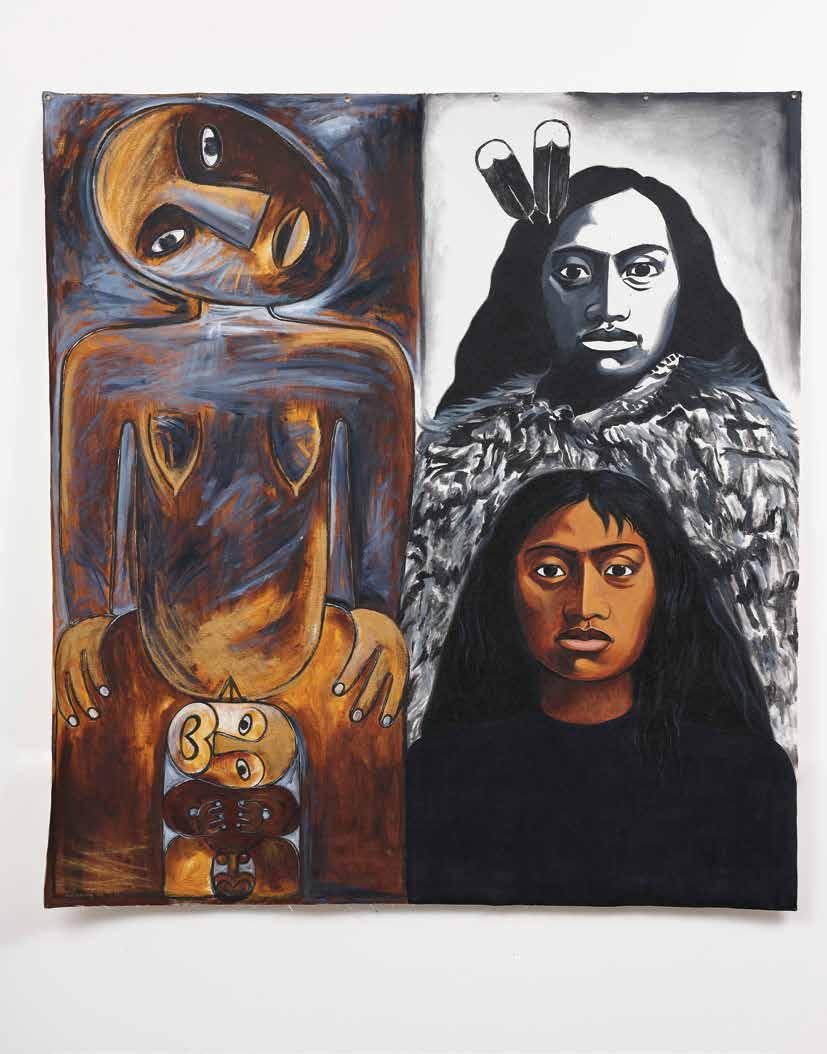

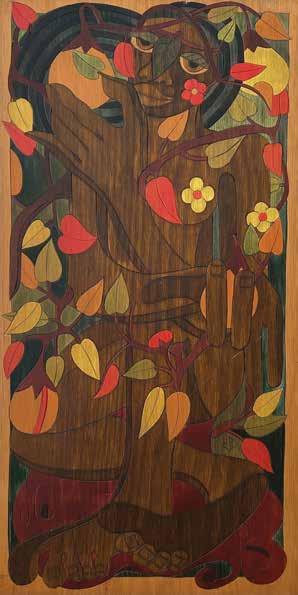
Ranginui-E-Tu-Nei, Sky Father
Incised Wood Panel 60.5 x 30.5
Signed $6,000 - 8,000
PROVENANCE
Private Collection, Auckland Acquired from the artist
Papa-Tu-A-Nuku, Earth Mother
Incised Wood Panel 59.5 x 30.5
Signed $6,000 - 8,000
PROVENANCE
Private Collection, Auckland Acquired from the artist

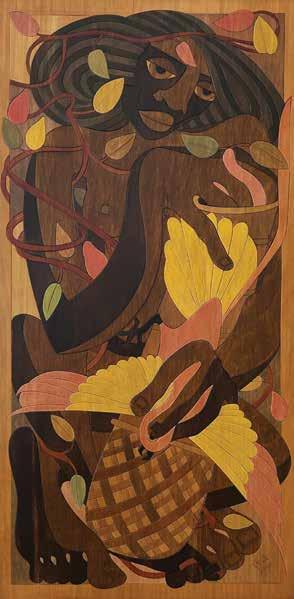
06
Incised Wood Panel 61 x 30.5
Signed
$6,000 - 8,000
PROVENANCE
Private Collection, Auckland Acquired from the artist
Incised Wood Panel 61 x 30.5
Signed
$6,000 - 8,000
PROVENANCE
Private Collection, Auckland
Acquired from the artist

08 MARTI FRIEDLANDER (1928 - 2016)
Tractor
Vintage Silver Gelatin Print, edition 1/1 38 x 37
Signed verso
$8,000 - 12,000
PROVENANCE
Private Collection, Auckland
Acquired from FHE Galleries, Auckland
09 FRED GRAHAM (b. 1928)
Hobson’s Choice
Carved wooden sculpture 87 x 32 x 27.5
Signed & dated 2005 on base
$20,000 - 30,000
PROVENANCE
Private Collection, Christchurch
Acquired c.2005
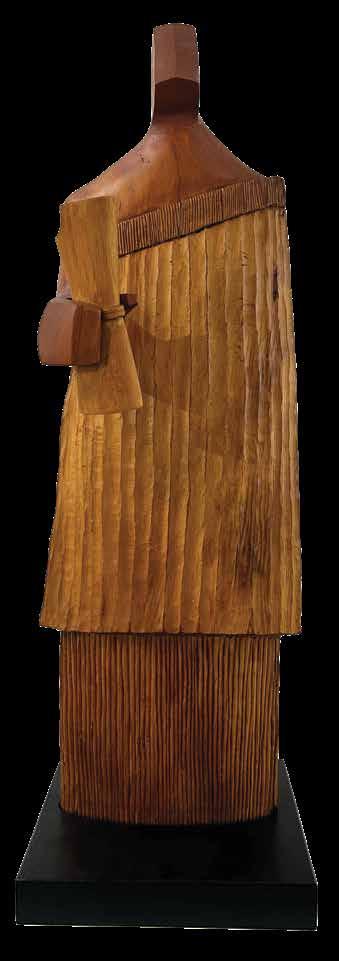

10
COLIN MCCAHON (1919 - 87)
Oaia, Muriwai Godwits, 1972
Charcoal on paper 35.5 x 42
Inscribed Oaia, Muriwai Godwits
$25,000 - 35,000
PROVENANCE
Private Collection, Auckland
Acquired from Fine Jewels, Decorative Arts & Fine Paintings, Webb’s, 17/09/1998
MCCAHON DATABASE RECORD NUMBER
CM000463
11
HAMMOND (1947 - 2021)
Wishbone Ash Urn Cornwall Rd
Watercolour & acrylic on paper 29.5 x 21
Signed, inscribed & dated 2011
$14,000 - 18,000
PROVENANCE
Private Collection, Auckland
Acquired from McLeavey Gallery, Wellington 2012



12 ANN ROBINSON (b. 1944)
Ice Bowl
45% crystal glass, #62 - Colourless 24 x 38
Signed, inscribed #62 & dated 1999 NZ on base
$10,000 - 20,000
PROVENANCE
Private Collection, Auckland
Acquired from FHE Galleries, 23 July 1999
13 RITA ANGUS (1908 - 70)
Pārengarenga Harbour
Watercolour 24.5 x 34.5
Signed
$20,000 - 30,000
PROVENANCE
Private Collection, United States
Acquired from Ferner Galleries, Auckland 2000
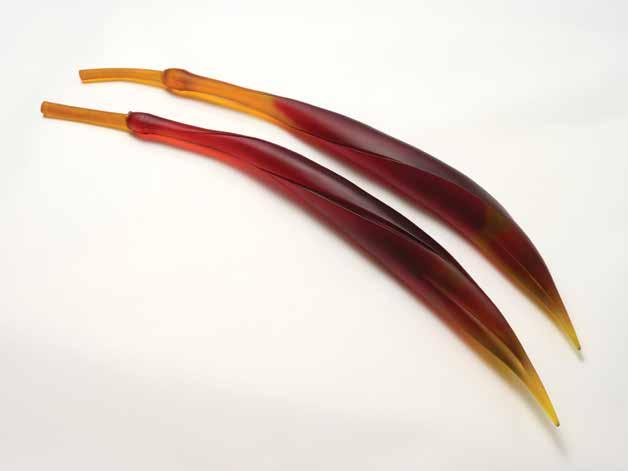
Cast Glass, two parts 119.5 x 18 x 9
Signed & dated 2006
Includes custom packing case
$25,000 - 35,000
PROVENANCE
Private Collection, Christchurch
Acquired from FHE Galleries, Auckland

15 LOUISE HENDERSON (1902 - 94)
Talis Tapestry
Wool embroidery 87 x 157
$10,000 - 15,000
PROVENANCE
Private Collection, Auckland
Purchased from John Leech Gallery, Auckland 1983
Portrait of Louise Henderson in front of the New Zealand Room tapestry, Wellington. Evening post (Newspaper. 1865-2002) Ref: PAColl-7796-93. Alexander Turnbull Library, Wellington, New Zealand. /records/22882542
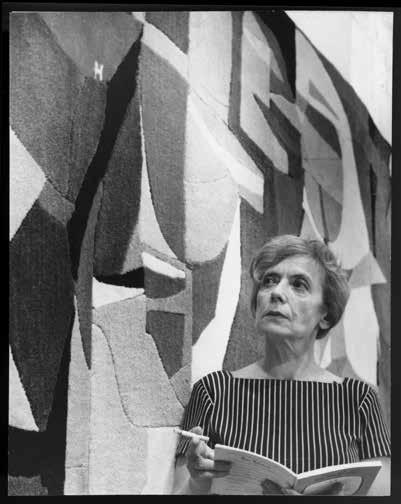
16
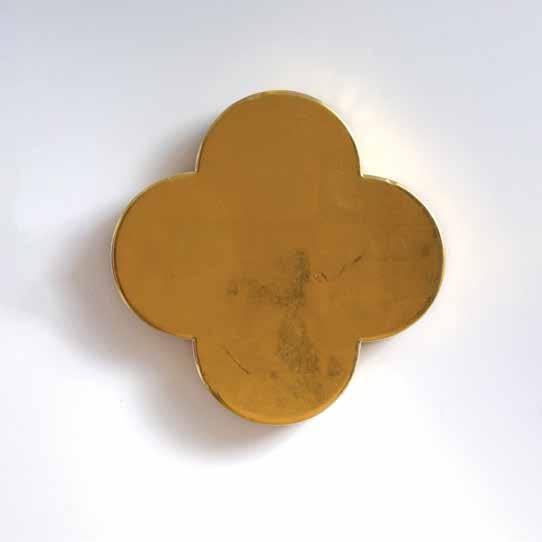
MAX GIMBLETT (b. 1935)
Threshold Altar, 2009/2023
Gesso, resin and 22kt gold leaf on wood panel
38.1 x 38.1
Signed, inscribed & dated verso
$18,000 - 26,000
PROVENANCE
Private Collection, Auckland
Acquired from Gow Langsford Gallery, Auckland

17 PETER SIDDELL (1935 - 2011) Frontera, Alhambra Oil on canvas 62 x 90
Signed & dated 1996
$25,000 - 35,000
PROVENANCE
Private Collection, Auckland
EXHIBITED ARTIS Gallery, Auckland 1996
ILLUSTRATED
The Art of Peter Siddell, (Random House New Zealand, 2011) p.193

KARL MAUGHAN (b. 1964)
Blackheath
Oil on canvas 56 x 46
Titled, signed & dated 2006 verso
$15,000 - 20,000
PROVENANCE
Private Collection, Auckland
STANLEY PALMER (b. 1936)
Awana,GreatBarrierIsland
Oil on linen on board 60 x 97
Signed & dated 2003
$12,000 - 18,000
PROVENANCE
Private Collection, Auckland
20 STANLEY PALMER (b. 1936)
Above Matauri - Towards Motuharakeke Oil on linen 70 x 120
Signed & dated 2016
$14,000 - 18,000
PROVENANCE
Private Collection, Masterton Acquired from Melanie Roger Gallery, 2016
EXHIBITED
Chart of the Far North, 19 October - 12 November 2016, Melanie Roger Gallery
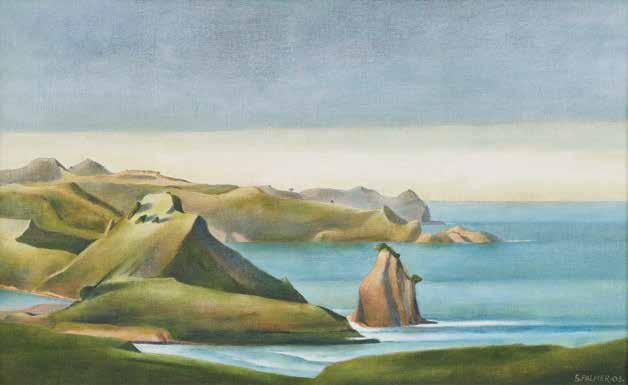
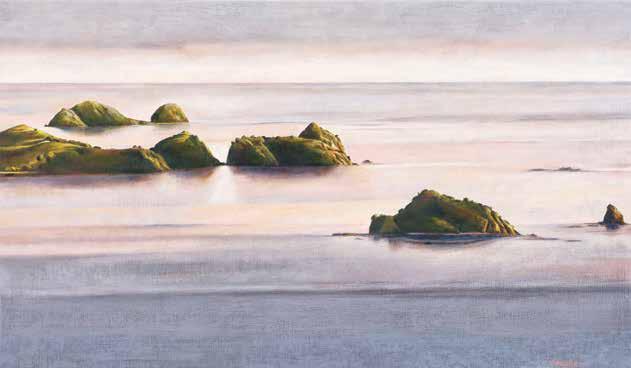

21 BUCK NIN (1942 - 1996)
Rongopai Restoration
Oil on board 80 x 62
Signed & dated 1978
Inscribed on original label affixed verso
$20,000 - 30,000
PROVENANCE
Private Collection since 1978
EXHIBITED
A Joint Exhibition by Buck Nin & Susan
Poff Maori land Paintings, Etchings & Silkerie, Antipodes Gallery, 14-25 November 1978
22 BUCK NIN (1942 - 1996)
The Call of the Marae - Rongopai 1977
Oil on board 70 x 51
Signed & dated 1978
$15,000 - 25,000
PROVENANCE
Private Collection since 1978
EXHIBITED
A Joint Exhibition by Buck Nin & Susan
Poff Maori land Paintings, Etchings & Silkerie, Antipodes Gallery, 14-25 November 1978
23 BUCK NIN (1942 - 1996)
The Weka Calls - Rongopai May 1977
Oil on board 70 x 55
Signed & dated 1978
$15,000 - 25,000
PROVENANCE
Private Collection since 1978
EXHIBITED
A Joint Exhibition by Buck Nin & Susan
Poff Maori land Paintings, Etchings & Silkerie, Antipodes Gallery, 14-25 November 1978

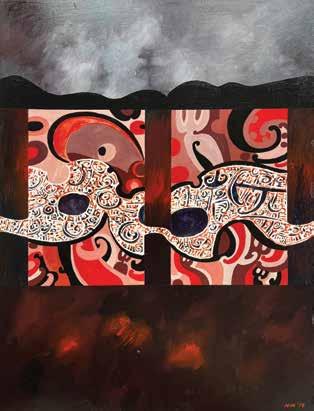

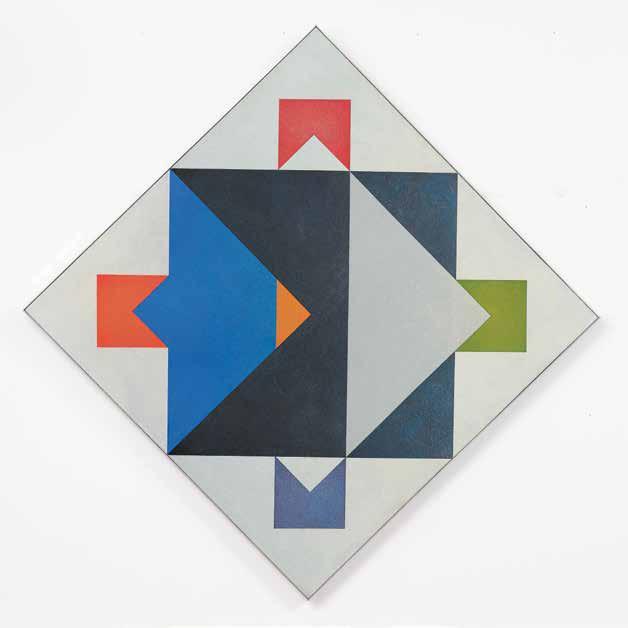
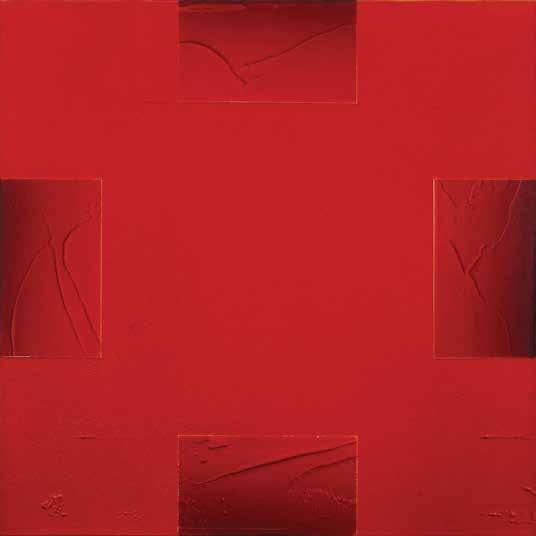
Voices of the Land - Nga Reo o te Whenua
Twelve plaques, Lacquer on etched stainless steel mounted on wood panels 56.5 x 240
$6,000 - 9,000
PROVENANCE
Private Collection, Auckland
25 ROY GOOD (b. 1945)
Diamond Matrix Series, Crossroads
Acrylic on canvas 120 x 120
Signed, title inscribed & dated 2017 verso
$7,500 - 9,500
PROVENANCE
Private Collection, Auckland
26 MERVYN WILLIAMS (b. 1940) Embers
Acrylic on canvas 80 x 80
Signed, inscribed Embers & dated 2002 verso
$14,000 - 16,000
PROVENANCE
Private Collection, Dunedin
ILLUSTRATED
Edward Hanfling, Mervyn Williams (Ron Sang Publications, Auckland, 2014) p.236
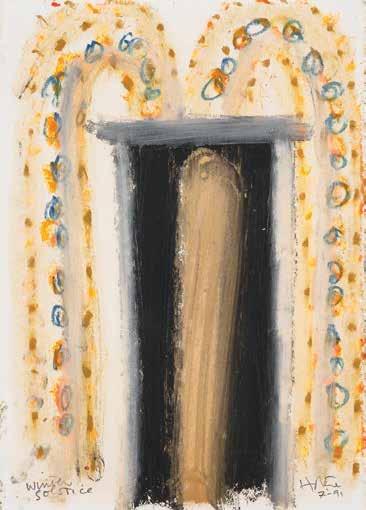


RALPH HOTERE (1931 - 2013)
Winter Solstice
Oil pastel on paper 35.5 x 24.4
Signed inscribed & dated 7-’91
John Leech Gallery label affixed verso
$15,000 - 25,000
PROVENANCE
Private Collection, Auckland
28 RALPH HOTERE (1931 - 2013)
Black Window
Lithograph 42 x 30
Signed, inscribed & dated 1988
$4,000 - 6,000
PROVENANCE
Private Collection, Auckland
29
JOHN WALSH (b. 1954)
Kōrero Te Puna Oil on fortified paper 41.5 x 59.5
$7,000 -10,000
PROVENANCE
Private Collection, New Plymouth


30 RAYMOND CHING (b. 1939)
Red Plumed (Count Raggi’s Bird of Paradise)
Watercolour 72 x 52
Signed & dated 1966
$18,000 - 24,000
PROVENANCE
Private Collection, Auckland
31 GRAHAME SYDNEY (b. 1948)
Study Jack Tar
Watercolour 55 x 72
Signed & dated 1989
$40,000 - 60,000
PROVENANCE
Private Collection, Christchurch


32 CHRIS CHARTERIS (b. 1966)
Hoeroa
Sperm whalebone, 153 x 33 x 40.5
$8,000 - 12,000
PROVENANCE
Private Collection, Christchurch
Acquired from Milford Galleries, Dunedin
EXHIBITED
Chris Charteris Forces of Land and Ocean, Milford Galleries, Dunedin 8 Apr - 4 May 2016
33 RAYMOND CHING (b. 1939)
Pheasants Leave the Ark
Oil on board 101 x 155
Signed
$65,000 - 85,000
PROVENANCE
Private Collection, Auckland
EXHIBITED
Ray Ching Ark, ARTIS Gallery, Auckland
April 4 - 29 2007
Illustrated
Ray Ching Ark (ARTIS Gallery, Auckland) p.2, 26, 27

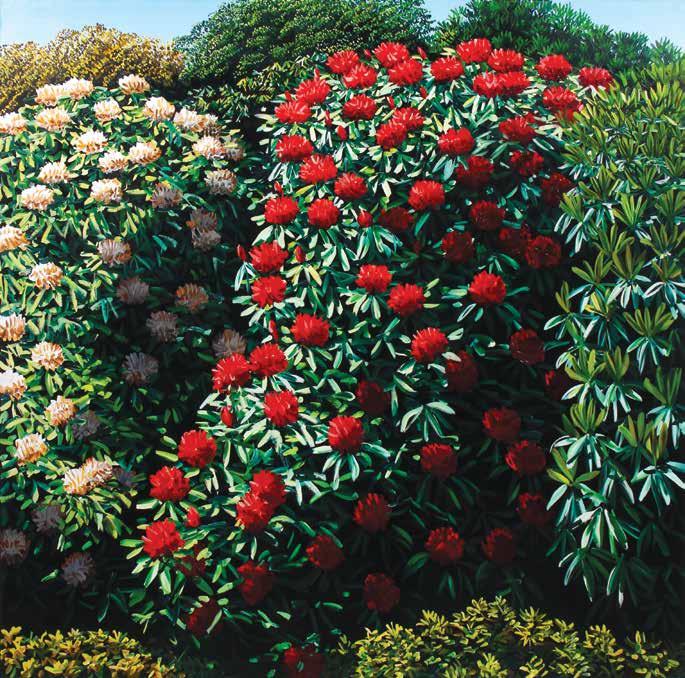
Oil on canvas 137.5 x 132
Signed, inscribed & dated 2013-14 verso
$16,000 - 22,000
PROVENANCE
Private Collection, Dunedin
Signed & inscribed verso
$65,000 - 85,000
PROVENANCE
Private Collection, Dunedin
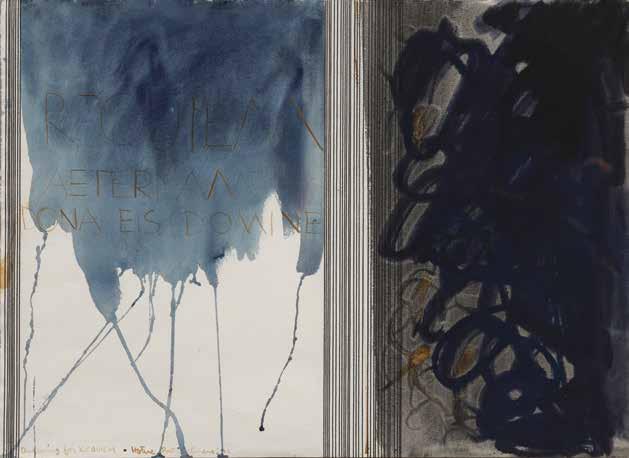
36 RALPH HOTERE (1931 - 2013)
Drawing for Requiem
Watercolour 51 x 70
Signed, inscribed Drawing for Requiem & dated Port Chalmers 1974
$20,000 - 30,000
PROVENANCE
Private Collection, Nelson Purchased from Catchment Gallery, Nelson 2006
37 SHANE COTTON (b. 1964)
Pipitonu, Two Hearts Beat as One, MTG Hawkes Bay Museum (2022)
Acrylic on linen 100 x 75
Signed & dated 2017
$60,000 - 80,000
PROVENANCE
Private Collection, Christchurch Acquired from Nadene Milne Gallery, Christchurch
EXHIBITED
Shane Cotton: White Hole, 1 - 22 December 2017, Nadene Milne Gallery, Christchurch
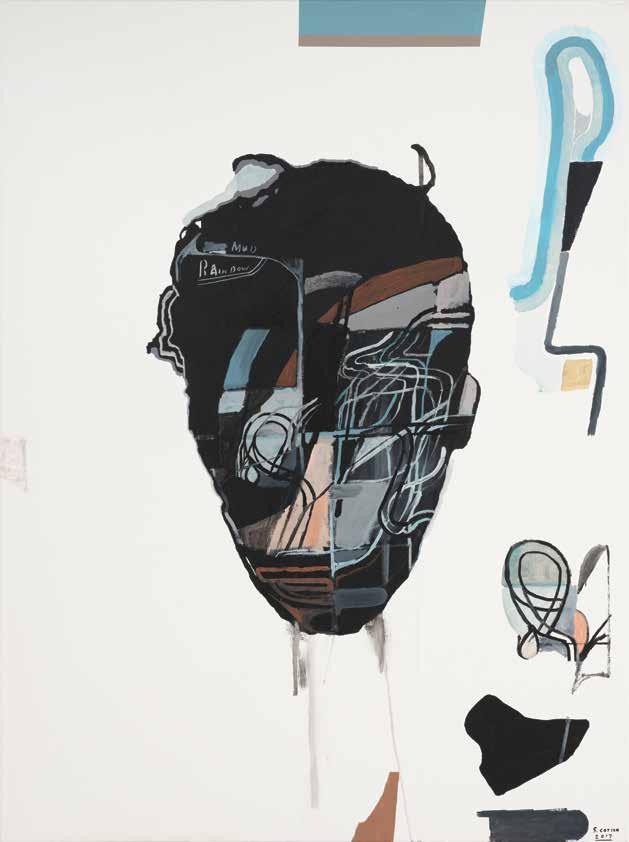

38 DAMIEN HIRST (British b. 1965)
The Secrets H14 2024 (full set of 8)
Eight laminated Giclée prints on aluminum composite panels 120 x 93
Signed and numbered on labels verso $60,000 - 80,000
PROVENANCE
Private Collection, Australia
TIMED EDITIONS
H-14-1 Realisation 201/395
H14-2 Happiness 201/327
H14-3 Tolerance 201/402
H14-4 Wisdom 201/319
H14-5 Reassurance 201/312
H14-6 Resolution 201/383
H14-7 Selflessness 201/575
H14-8 Knowledge 201/413
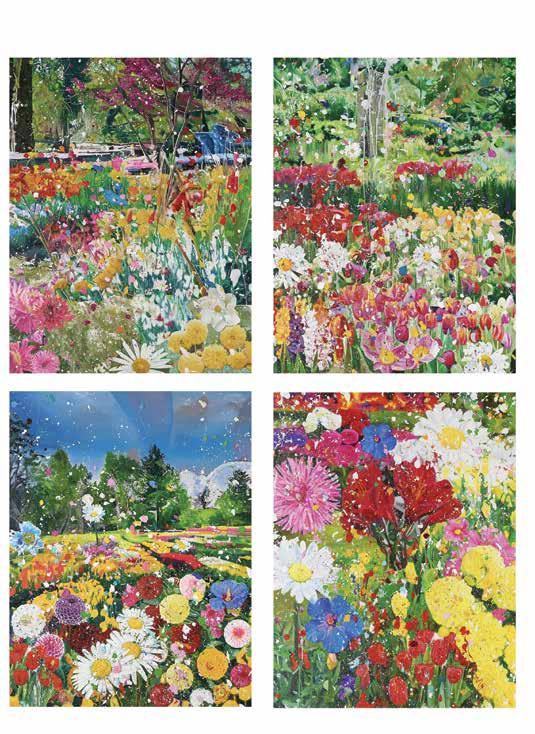
The Secrets editions are based on the paintings from Hirst’s latest series, The Secret Gardens Paintings (2023). Rendered in a rich and diverse palette, these works capture lush landscapes, populated by seemingly endless species of flowers. They mark a natural evolution in Hirst’s own practice, and his long engagement with the tension between realism and abstraction. The interrelation between humanity and the environment is an important
theme. Hirst wants the works to feel like the hope and futility we get when we try to control nature The Secret Gardens Paintings were first unveiled at Frieze London in 2023 to mark the 20th anniversary of the fair. A selection of the paintings were displayed at Château La Coste in March 2024 as part of Hirst’s exhibition of sculptures and paintings, titled The Light That Shines.


39 FIONA PARDINGTON (b. 1961)
The Prince of Wales (2023)
Inkjet print on Hahnemühle paper, edition 7/10 176 x 140 framed in hand
lacquered black Goldie moulding with AR70 non-reflective museum glass
Signed, inscribed & dated 2023 verso
$25,000 - 35,000
PROVENANCE
Private Collection, Auckland Starkwhite, Auckland
40 FIONA PARDINGTON (b. 1961)
Small Portrait of a Fugitive (2005)
Silver gelatin print, edition 4/7 40 x 50
Signed, inscribed & dated 2005 verso
$15,000 - 20,000
PROVENANCE
Private Collection, Auckland


41 FIONA PARDINGTON (b. 1961)
Pipitonu, Two Hearts Beat as One, MTG Hawkes Bay Museum (2022)
Pigment inks on Hahnemühle Photo Rag, edition 1/10, 176 x 140, framed in hand lacquered black Goldie moulding with AR70 non-reflective museum glass
Signed, inscribed & dated 2022 verso
$25,000 - 35,000
PROVENANCE
Private Collection, Auckland
42 FIONA PARDINGTON (b. 1961)
Toa Toa Canterbury Museum (2021)
Pigment inks on Hahnemühle Photo Rag, edition 3/10, 109 x 145, framed in hand lacquered black Goldie moulding with AR70 nonreflective museum glass
Signed, inscribed & dated 2021 verso
$25,000 - 35,000
PROVENANCE
Private Collection, Auckland
43
PETER STICHBURY (b. 1969)
Man Pretending to be James James
Acrylic on linen 60 x 50
Signed, inscribed & dated 2007 verso
$40,000 - 50,000
PROVENANCE
Private Collection, Auckland
Acquired from Starkwhite, Auckland
EXHIBITED
Less Than Zero, Starkwhite, Auckland
ILLUSTRATED
Peter Stichbury, The Alumni, (Starkwhite and Te Tuhi Centre for the Arts, 2010) p.37
The exhibition called ‘Less Than Absolute Zero’ by Peter Stichbury, at Starkwhite Gallery until November 3, provides experiences of a different order. His work is wry, poignant and based entirely on the human face rather than abstract gestures.
Yet there is an abstract quality in these paintings, the faces are stylised, subtlety distorted so that we are aware that the people portrayed are never quite what they want to be. In this way, a face called Man Pretending to be James Schamus seems to be the perfect egg-head, scientist or pontificating commentator. The egg-shaped outline of his balding head emphasises this and his spectacles, thin mouth and tidy bow tie. But it is all too neat, his staring eyes shows he is not entirely at home in his role. He’s a nice guy, but he is not what he thinks he is.
Stichbury’s paintings have always focused on the human face. He began with beautiful boys and girls embarrassed about the roles they were expected to play. His subtle distortion rounds out the faces so, in his previous show, they fitted well when painted on old lawn bowls. In these more conventional paintings, the roundness that emphases oddity still works best for him. When the paintings become a bit flat, the feeling of unease doesn’t really work.
TJ
MCNAMARA (NZ Herald, October 2007)

44
TREVOR MOFFITT (1936 - 2006)
The Heroes Return Oil on board 66 x 75
Signed & dated 1979
$40,000 - 60,000
PROVENANCE
Private Collection, Auckland
Purchased form Trevor Moffitt exhibition New Work From The South, Brooke/Gifford Gallery Christchurch, March 1979
EXHIBITED
Elva Bett Gallery, Wellington 1979 Brooke/Gifford Gallery Christchurch, March 1979
The Heroes Return is a work from Moffitt’s My Father’s Life series. Comprising 139 paintings, Moffitt charted his father’s life through a series of personal vignettes. Simultaneously mundane and profound, these works are deeply personal, but also reflect universal experiences – the complex relationship of a man with his father, the cycle of loss and grief and the fear of growing old and losing independence.
John Coley in an article published in the Christchurch Star wrote on the series stating; Moffitt, in rediscovering Dad, is reinventing an authentic Kiwi working class hero.
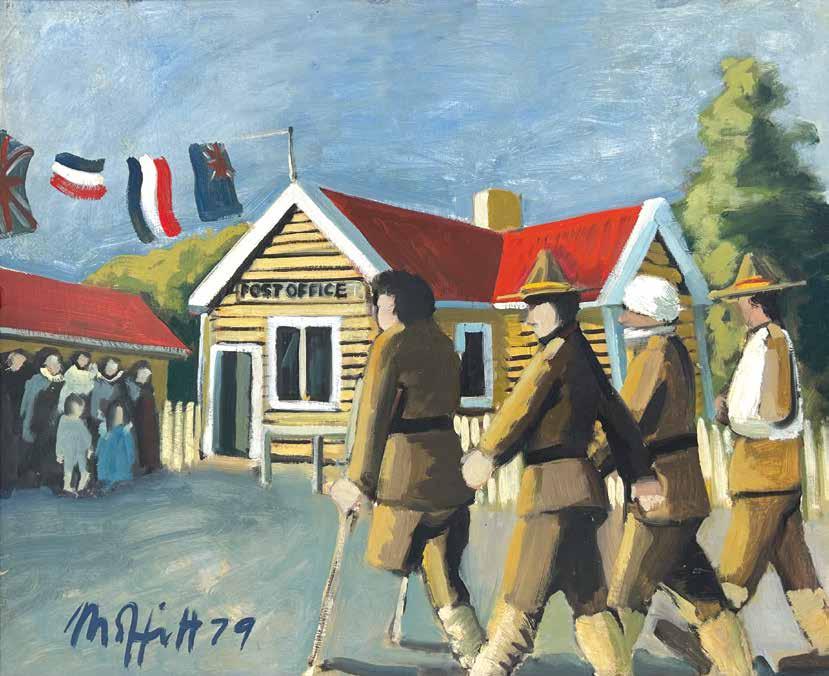
45
MICHAEL SMITHER (b. 1939)
Pukekura Park with Rotunda, 1967
Oil on board 91.5 x 103
Signed & dated 1967
$190,000 - 230,000
PROVENANCE
Collection of Barry Hopkins Art Trust/Visual Arts
EXHIBITED
John Leech Gallery, Auckland, 1968, cat no. 30
Govett-Brewster Art Gallery, New Plymouth 1 November - 16 December 1984
ILLUSTRATED
Michael Smither, an introduction, (GovettBrewster Art Gallery, New Plymouth) p.74
Trish Gribben, Michael Smither Painter, (Ron Sang Publications, Auckland, 1990) p.55
My Grandfather, Ninian Duncan, took me for pram rides in Pukekura Park to feed the ducks. Big black swans used to reach right into the pram and terrify and delight me all at once. At the Gables I lived right beside Pukekura Park and made many paintings of these lakes - Michael Smither

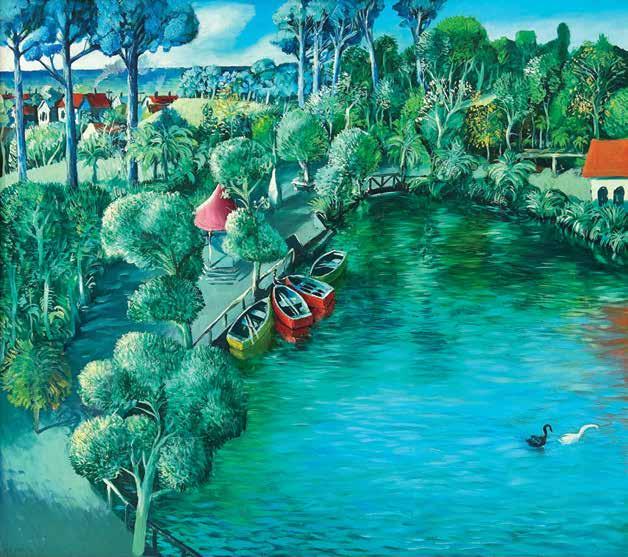
GRETCHEN ALBRECHT (b. 1943)
Lunette/Silken, 1984
Acrylic on stretched canvas, hemisphere form
153 x 306
Signed & dated 1984 verso
$100,000 - 150,000
PROVENANCE
Private Collection, Christchurch
LITERATURE
James Ross (ed), AFTERnature: Gretchen
Albrecht: A Survey – 23 Years, (Sarjeant Gallery, Wanganui, 1986)
Gretchen Albrecht’s Lunette/Silken is a significant and definitive hemisphere painting within this artist’s oeuvre.
Completed in 1984, this painting represents a crucial juncture where the artist freed herself from references to the outside world and recognizable subject matter. From here on in the only footholds to possible meaning and intention the artist would provide her audience would come via increasingly oblique and often abstruse titling. With the abandonment of recognisable subject matter came a heightened and more sophisticated use of colour and chromatic relations as well as a greater luminosity. These surface qualities were also enhanced by the increasing availability of acrylic paint which fundamentally changed the nature of the artist’s painting; its inherent plasticity allowing her to work more quickly and to manoeuvre the paint around the surface in a more aggressive fashion. The vibrancy and intensity of the colours was also much greater with the new water-based paints and when applied to unprimed canvas they would stain into the weave of the canvases creating the lucidity and ethereal beauty which is the paramount hallmark of Albrecht’s work.
Completed in 1984, Lunette/Silkin represents a significant shift in a term coined by Francis Pound, the ‘central hinge’ (where the two quadrants meet) was to become an intensely positive force in Albrecht’s hemispheres over the course of 1984, with works increasingly becoming more assertive. “The emphatically visible curves of colour around [Albrecht’s] hemispheres, from 1981 to 1986, those parallel curves which agitate so repeatedly their surface, serve not only to dramatize the act of painting – to show the sweep of the artist’s arm: they serve also to illuminate the structure of the hemispheric form itself.” (F Pound, 1986).
Gretchen Albrecht photographed in 1981 with one of her “Hemisphere” canvases, Anne Kirker, New Zealand Women Artists, (Reed Methuen Publishers Ltd., Auckland, 1986) p. 147
Sue Crockford Gallery, Inaugural Exhibition of Sue Crockford Gallery, Albert Street, 1985
Art New Zealand (No.189 / Spring 2023) p.45
In Lunette/Silken the dialogue and division between the left and right quadrant is made explicit through the abruptly contrasting pigments. Like all of the hemispheres, at the heart of this painting is a conversation about duality, pairings and polarities, both real and of the heart and mind. Here the dialogue between left and right is crucial. A lunette is a semi-circular space in a classical building and in Lunette/Silken the artist aptly displays her unique ability to speak with both colour and shape in an idiosyncratic and uniquely original voice.
Lunette/Silken is just one of three paintings across Albrecht’s entire oeuvre to explicitly cite ‘Lunette’ in the artwork title.


47 EVELYN PAGE (1899 - 1988)
Still Life with Green Bottle, c. 1970
Oil on board 57.5 x 42
$50,000 - 75,000
PROVENANCE
Private Collection, Auckland
Webb’s, Important New Zealand Paintings, Auckland, 10/11/1994
Collection of the artist’s daughter, Christchurch
Over the course of her career, Evelyn Page painted many portraits tender, inquisitive portrayals of family members, friends and contemporaries. Many of these works are noted for their directness and freedom of painted expression.
Born in 1899, Evelyn Margaret Polson was the youngest of seven children. Her parents John and Elizabeth Polson were straight laced, “Victorian” as Evelyn described them. Although this was a strictly religious upbringing she was encouraged to foster a love of music, art and writing from a young age. In 1915, fifteen year old Evelyn joined the Canterbury College School of Arts where her formal training began and she would remain until 1922. She quickly proved herself to be a talented student, receiving numerous accolades and prizes. This was of course a formative time for the young artist, who in addition to learning from teachers Margaret Stoddart, Leonard Booth and Cecil Kelly, forged a number of lifelong friendships and connections with her peers including Ngaio Marsh and Viola Macmillan Brown.
She became a member of the Canterbury Society of Arts in 1922. For a period after this Page focused on music, studying piano with Ernest Empson. Awareness of this musical talent deepens an appreciation of her paintings which have a musical sensitivity to them. Page’s affinity for finding rhythm in composition and colour gives many of her works a deep visual musicality. It was through Empson that she met Frederick Page. During 1936 her first solo exhibition was held at the Durham Street Gallery, Canterbury Society of Arts. The exhibition was a great success with every work selling at the opening.
Evelyn was one of the founding members of the New Zealand Society of Artists and taught part-time at Christchurch Girls’ School before joining Frederick in London in 1937. The period that followed was one of exceptional and prolific creative output for her. During this period the couple built their network of friends and fellow artists in London and travelled around Europe. Upon their return to New Zealand, Frederick and Evelyn married and settled in Governors Bay where they lived for several years. They had two children, Sebastian and Anna. Whilst living there, and over the course of a number of summer painting holidays (a tradition she maintained throughout her life), Evelyn mastered the pure treatment of colour in her work. After Frederick was appointed to set up the School of Music at Victoria University in 1945, the family moved to Wellington. Evelyn and the children lived in Pukerua Bay she used to travel into the city to visit Frederick and to paint.
Page’s wonderfully expressive portraits of friends and peers, interior still lifes and cityscapes now stand out as a form of protest in response to mainstream modernism. The Pages returned to London and Evelyn attended a summer school in Salzburg. In the 1960s and 1970s Page’s work assumed a quieter, more interior focus. Living in Waikanae and suffering from arthritis, a slower rhythm sustained her in the final decades of her work. She died in 1988. Page was a visionary, and her works possess a refreshing vivacity of spirit which have stood the test of time.

The Village, Dorset
Gouache on paper 64 x 51
Signed
$100,000 - 150,000
PROVENANCE
Private Collection, Auckland
This gouache belongs to the period when Frances Hodgkins was living in the little village of Worth Matravers in Dorset in the late 1930s, only a bus ride over the coastal hills to Weymouth, or inland to Corfe Castle, where she spent her final years. Yet there are elements here that suggest this is not one single Dorset village, but rather a composition derived of many of her favourite motifs. The houses are tucked in and amongst each other, rather than laid out in a cohesive order, their tiny windows and simple porches to be found in many of her landscape paintings ranging from France to Spain to Britain, so that they become a kind of generic symbol of shelter and containment.
A stark bare tree alm rises up in the far left corner, while in upper right of the composition there is the highly distinctive form of an oast house, in which hops are traditionally dried. The conical-roofed design derives from Sussex, which Hodgkins drew when on holiday in Haywards Heath in the early summer of 1929 (see https:// completefranceshodgkins.com/objects/26646/villagescene-peaslake). There are fewer oast houses in Dorset, but their roofs are angular, rather than cone-shaped.
Another much-loved motif is that of water flowing from a bridge or emerging from a watermill. Here it gushes forth from a black arch, cutting across the foreground, while in the very centre of the painting two trees rise up to embrace each other, like dancers in an ode to autumn. It has a muted palette, lifted by soft yellow detailing, while the overall design serves as an elegant fugue in browns and greys.
MARY KISLER
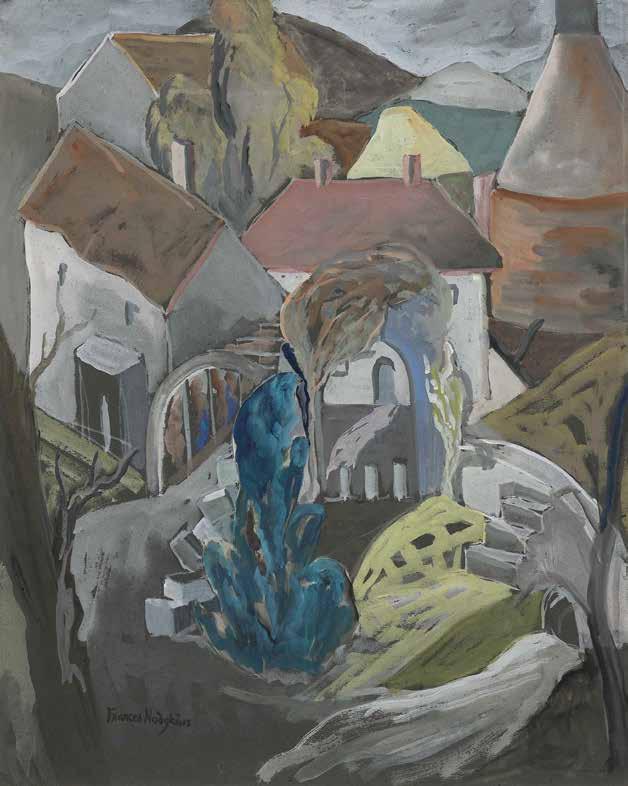
49
GORDON WALTERS (1919 - 95)
Untitled, 1982
Acrylic on canvas 62 x 183.5
Signed&dated'82verso
$450,000 - 550,000
PROVENANCE
Private collection, Auckland
Collection of Ian Scott (1945 - 2013)
Acquired from ARTIS Gallery, Auckland, August 1985
EXHIBITED
New Paintings and Works on Paper, ARTIS Gallery, Auckland, 9 July - 3 August 1985 Gordon Walters: New Vision, Auckland Art Gallery Toi o Tāmaki 2017 - 2018, Dunedin Public Art Gallery, 2018
ILLUSTRATED
GORDON WALTERS NEW VISION, (Auckland Art GalleryToioTāmaki&DunedinPublicArt Gallery,2017)p.30(fig16)
Gordon Walters is acknowledged as one of New Zealand’s most distinctive and significant artists and his rigorous and refined painting represent a high point in New Zealand art. Walter’s art was based on an exploration of the dynamic relationships between a limited set of elements derived from a wide yet selective range of sources. This visual enquiry expanded outwards connecting art forms and theories from Europe, Australia, the Americas and the Pacific. The results were an artistic practice that was globally connected, yet centered around the artist’s response to his immediate environment.
In 1947 Walters visited Theo Schoon in South Canterbury where Schoon was recording Maori rock drawings. It was one of many occasions on which Walters drew inspiration from traditional Maori art. When he travelled to Europe in 1950, Walters realised that modern art had learned important lessons from the arts of the Pacific. Soon after, he began working with the koru, or fern bud, motif – a Maori decorative form used on rafter paintings, incised gourds and in tattooing. In the extraordinary series of abstract paintings that resulted, this simple form expresses a vast range of dynamic relationships.
Merging the geometry of modernist abstract painting with the unfurling fern motif from Maori art, Waltersʼ koru paintings are meditations on the theme of exchange – the way forms and ideas move from one place to another and change along the way.
In the 1980s Walters’ work reached a new level of refinement, which explored the potential of shapes that overlap each other. Refining the tenor of his painting, brushstrokes became virtually invisible, the colours more subtle and softly muted, and the surfaces rendered with total precision. Walters was in the habit of returning to his ‘back catalogue’ of early studies and source material for inspiration and many of the ideas for these late works are nascent in the 1950s gouache paintings.
The work included in this sale, Untitled, 1982, illustrates Waltersʼ experimentation with a landscape format. The delicately modulated colour draws the eye in, highlighting Waltersʼ superb mastery of his medium.
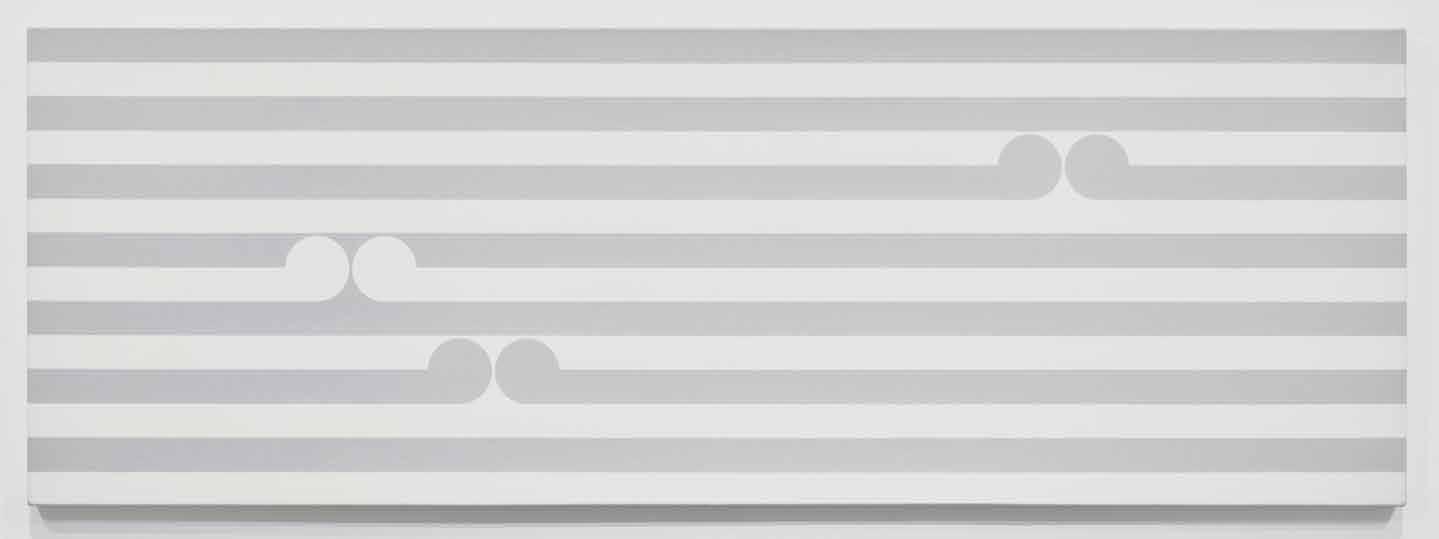


Born in Auckland, Don Binney grew up in Awatea Road, Parnell. As the only child of his wool broker father and wife Mary, the relationship between mother and son was close. It is thanks to her that drawings from Binney’s childhood and beyond were retained for safekeeping. A youthful fascination with birds and their place in the natural world was further encouraged during Binney’s time at Kings College, when he joined with classmates in bird-spotting.
The artist’s life-long connection with Te Henga/Bethells Beach, is also traced to these early years. On his 11th birthday young Binney begged his parents to take him there for a day out, this lead to the family renting a homestead cabin at the southern end of the beach. This early connection remained a continuous thread throughout the artist’s life and work.
In 1962 Binney began painting at Te Henga and views of Puketotara with indigenous birds became a key motif in his work. In bird watching Binney said he discovered a passage into the landscape and the opportunity to develop a personal relationship with it. In 1965 Binney was included in a survey show of New Zealand painting held in London and the Eight NZ Artists touring show of Australian state galleries.
In 1967 he was the recipient of a Queen Elizabeth II Arts Council travel fellowship which enabled him to live and work in Mexico, London and Australia.
Binney returned to teach at the Elam School of Fine Arts as Head of Painting. He was awarded an OBE for services to the arts in the 1995 Queen’s Birthday Honours and retired in 1998 after 24 years of teaching. In the following years, Binney continued to focus on his art, travelling extensively throughout New Zealand and to places of international spiritual significance.
From 2002 he worked increasingly in charcoal and coloured pencils because of their portability and simply because he loved the intimacy of the medium. Binney exhibited continuously from the 1960s until his death in September 2012, aged 72.
As one of New Zealand’s most important twentiethcentury artists, Binney is represented in both private and public collections including the Auckland Art Gallery, The University of Auckland and Museum of New Zealand Te Papa Tongarewa.
Binney is a pivotal artist of unusual sensitivity
and insight - Elva Bett
Don Binney, 1977-79, New Zealand, by Marti Friedlander. Te Papa (O.031286), Courtesy of the Gerrard and Marti Friedlander Charitable Trust
50 DON BINNEY (1940 - 2012)
Swoop of the Kotare
Acr ylic on Steinbach 109 x 71.5
Signed & dated 1983
$800,000 - 1,200,000
PROVENANCE
Private Collection, Christchurch
Acquired from Gow Langsford Gallery, c.2007
In Maori and Polynesian tradition, the kotare - or sacred kingfisher - is believed to have power over tides and waves. It also has strong associations with watchfulness and guardianship - two qualities which Don Binney, an ardent environmentalist, often found sadly lacking in the human world. There were lessons that could be learnt from these and other bird species - a point he often made - drawing attention to their inbuilt sense of balance, mobility, organisational skills and grace. In a 1972 interview with John Daly-Peoples, he afforded birdlife elder status, asserting that they have lived in harmony and have coexisted with the topography, with the space, with the light, of habitable earth space so much longer than people
With the visual intensity and hyper-clarity of a dream, Swoop of the Kotare is a powerful amalgam of two important subjects from earlier in the artist’s career: the bird in flight and Lake Wainamu, a short distance inland from the beach at Te Henga, where he maintained a studio for nearly two decades.
The kotare first appeared in Binney’s art in 1964. In his early masterpiece, Kotare over Ratana Church, Te Kao, the fluid, almost futuristic form of the bird is elongated and stretched across the width of the painting. Binney described his subject, in this instance, as Tai Tokerau’s ubiquitous-flying kotare (Pacific sacred kingfisher, Halcyon sancta) skewering the space above the consecrated shape. But it was the painting from the following year, Kotare Over Hikurangi, that provided the prototype for the bird in the 1983 painting. In Swoop of the Kotare, he relocated the bird to the dune-impounded lake (Binney’s description) of Wainamu. The stylised treatment of the bird in flight, the scale and its position in the composition are almost identical to those in the 1965 painting (although the bird has been flipped so that it now flies from left to right). During later phases of his career, Binney often revisited earlier themes and subjects in said fashion, not slavishly copying material but seeking new visual challenges and solutions.
An exhibition devoted to this approach, Don Binney: Revisiting, was shown at Brooke-Gifford Gallery in 1999. By way of explanation, he wrote: Artists draw a lot from their own past. I have no inhibitions about reviving my earlier forms and recycling them ... As well as numerous preliminary drawings and variations on the kotare/ Wainamu theme, Binney produced an earlier, almost-exact version of this composition, a serigraph/screenprint titled Swoop of the Kotare, Wainamu, commissioned by art dealer Peter Webb in 1980. The image proved so popular that in 1986 a second edition, with slightly different coloration, was released.
It was in 1977 that Don Binney was forced, for personal reasons, to relinquish his leasehold bach at Te Henga. By then, the beach and environs had long been established as both his plein air studio and his adopted turangawaewae. Crestfallen, he moved the contents of his studio into the old Wooden Mansions at Elam School of Fine Arts, where he held a teaching position, and where this work was probably painted. Postdating Binney’s departure from the Te Henga studio by six years, the 1983 painting encapsulates what was, in hindsight, an Edenic phase in the artist’s life. Iconic and emblematic, yet also deeply personal, the high-flying bird is a messenger or envoy from that earlier time.
It is a still, translucent day in Binney’s timeless vision of kotare and lake. With its body inclined downwards and its head and beak upraised, the bird sets up an arabesque, swirling movement which continues in the contours of the land. There are no atmospherics or shadows; glare off the lake bathes the dunes and surrounding hills in a sharp yet otherworldly light. This is Binney’s peaceable kingdom at its most transfixed and resolved - a place he would continue to paint from memory, photographs and drawings until the end of his life.
GREGORY O’BRIEN

51 RALPH HOTERE (1931 - 2013)
Black Painting
Lacquer on board 90 x 59.5
Signed & dated 1969
$80,000 - 120,000
PROVENANCE
Private Collection, Auckland
Acquired from Frances Hodgkins Fellow Exhibition, Otago Museum, Dunedin, 1969 by the current owner
EXHIBITED
Frances Hodgkins Fellow Exhibition, Otago Museum, Dunedin, 1969
REFERENCE
Ralph Hotere, Kriselle Baker & Vincent O’Sullivan (Ron Sang Publications, 2008) p.320
Despitebeingdeterminedlyminimalandabstract,Hotere’s black paintings from the late 1960s conjure memories of natural phenomena seen. Applied with a ruling pen to sit proudonthesprayedlacquerblackground,thesimplered line and yellow circle in this work might seem to appear like images of an eclipsed moon and fiery sunset lighting up a horizon line.
There is a pleasing symmetry and balance, caused by the perfect placement of the straight line as a tangent to sit on the top of the large o shape which circumscribes the top two thirds of the work. Hotere’s curved and straight lines in this series of works are clear and bright, painted as they are in primary colours, but very thin, which makes them appear like traces about to be swallowed up by the shiny black surrounds. As is typical for these works, the glossy surfaceherecapturestheviewerandreflectsthemback,in this instance surrounded by a penumbra of yellow.
TheblackpaintingscomeafterHotere’sreturnfromEurope where he went to study painting and graphic design at the Central School of Arts and Crafts in 1961. He spent a further year in Vence in the south of France on a fellowship, and travelled and exhibited in London before returning to Auckland and work as an art adviser in 1965. He became a full time artist four years later in 1969 when he was awarded the Frances Hodgkins Fellowship at the University of Otago in Dunedin, and his output was prolific. 27 black paintings were exhibited at the Barry Lett Gallery
in September and he gifted his working drawings for the black paintings at the end of that year. Inscribed at the bottom of one page of 16 drawings of designs for paintings are the words Drawings for black paintings. Zero is round, zero is black, zero is zero.
Pakeha commentators on Hotere’s work have remarked on the artist’s citation of a quote from a lecture at the Institute of Contemporary Arts given by American abstractionist Ad Reinhardt (1913-1967) in the 1967 catalogue for his Zero paintings: The free-est and purest aesthetic statements of the twentieth century have been made in abstract painting. Although living in London at the time, Hotere had missed Reinhardt’s talk, but would have admired his uncompromising stance on the purity of abstraction. However, some Maori writers have a different view of the artist’s use of black and relate it to matauranga Maori. In curating Ralph Hotere’s black paintings into his exhibition Toi Tū Toi Ora at Auckland Art Gallery, Nigel Borell placed the works deliberately in the first two sections which were titled Te Kore (the great nothingness) and Te Pō (the perpetual night). In so doing, Borell argues that the artist’s use of the colour black may not be purely abstract and might allude to a suspended dimension that is full of potential and latent being. From this perspective, the fine lines of colour in these paintings might be allusions to Uenuku, the rainbow god, hinting at another cosmos beyond the visible.
LINDA TYLER
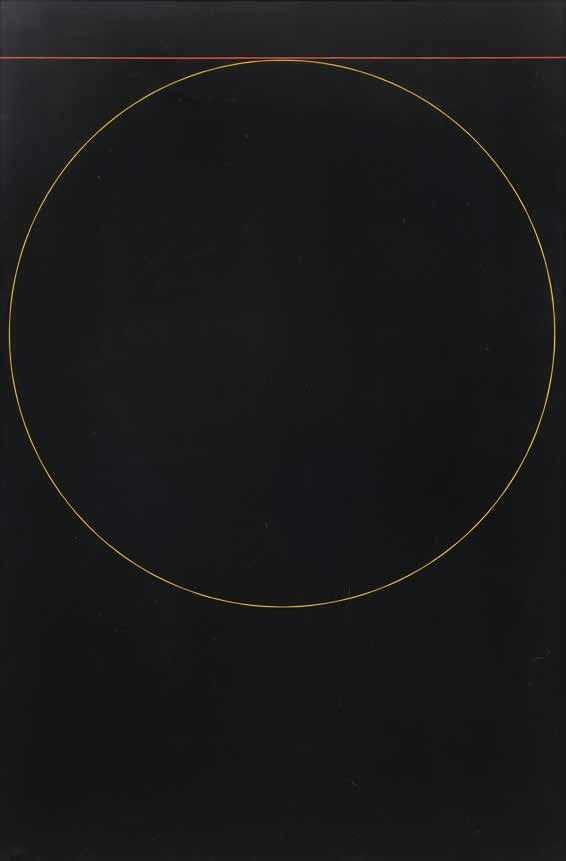
52 RALPH HOTERE (1931 - 2013)
Port Chalmers - Polaris, 1983
Acrylic and paper on burnished stainless steel
70 x 70
Signed, inscribed & dated 1983
$65,000 - 95,000
PROVENANCE
Private Collection, Taupo
Hotere began the Polaris series in 1962 when he was living in Vence, France and the Cold War was at its height in Cuba. In July of that year, Soviet premier Nikita Khrushchev located nuclear missiles near Havana as a deterrent to American invasion. In retaliation, the US Navy deployed five submarines in the North Atlantic. Each was equipped with 16 Polaris missiles, representing more than 40 times the destructive power of the bombs dropped on Hiroshima and Nagasaki. Twenty years later, with the visit to Auckland of the nuclear-powered frigate USS Texas, Hotere revived his Polaris series as a vehicle for anti-nuclear sentiments. The word POLARIS is mirrored in the text on the painting and combined with portentous references to George Orwell’s dystopian novel Nineteen Eighty-Four. Published in 1949, Orwell’s book envisions a future in which much of the world is in a state of perpetual conflict and populationsare subjected to mass surveillance.
After 1984, the political landscape in New Zealand changed, as did nuclear technology. The UGM-27 Polaris missile was the first submarine-launched missile (SLBM) and was deployed from 1961 until 1980. While the Muldoon-led National government supported visits from nuclear-capable vessels sent by treaty partners in ANZUS, the New Zealand public was not so keen. Protestors took to the streets in New Zealand’s main centres – opinion polls showed that between 1978 and 1983 opposition to nuclear-armed ship visits had risen from 32% to 72%. A snap election was called when National MP Marilyn Waring told Muldoon that she would not support his government in the vote against an opposition-sponsoredanti-nuclearbill.
Elected Prime Minister in July 1984, David Lange banned nuclear-powered or nuclear-armed ships from using New Zealand ports or entering New Zealand waters commenting that there’s only one thing worse than being incinerated by your enemies, and that’s being incinerated by your friends
Hotere shows tension building over the anti-nuclear issue with the parallel vertical white lines massing on a blackpainted paper support. These are interspersed with black verticals gouged out of the paper and then painted over. The paper has been collaged over the top two-thirds of a stainless-steel square with bolt holes in the corners, indicating the material’s origin as a base plate from an oven manufactured at the Fisher & Paykel factory in Mosgiel. Working over the steel plate’s surface with an angle grinder, Hotere destroys the reflectiveness of the material and at the same time simulates the energy of brush strokes, embedding them in the work. The resultant explosion of scuffs and abrasions is an effective metaphor for the destruction caused by nuclear weapons. Newspaper and television images of the Polaris missile showed it erect on the launch pad at Cape Canaveral, ready for testing. By scraping away the paper at the centre of the work and grinding the surface beneath, he has left the phallus shape of the missile as a negative detail of darker grey at the centre of the composition, a sinister warning of the consequences of nuclear war.
LINDA TYLER

53 TONY FOMISON (1939 - 90)
View from an Institute Window Oil on jute canvas 55 x 90
Signed indistinctly lower right
$350,000 - 450,000
PROVENANCE
Private Collection, Auckland
Acquired 1971 from Rue Pompallier Gallery, Akaroa, by present owner
Robert McDougall Art Gallery, Christchurch, purchased a work from the above exhibition, the first institutional acquisition of Fomison’s work
REFERENCE
Fomison: What shall we tell them?, Ian Wedde, (City Gallery, Wellington, 1994) p.184
Tony Fomison (1939 - 90) is widely regarded as one of this country’s most important and influential artists, a man who lived and painted on his own terms. This work, untitled by the artist but dubbed View from an Institute Window by a previous owner, is a good example of just how striking his art could be.
The painting was most likely completed in 1971 or 1972, a period of personal turmoil for Fomison. Living in a small, dilapidated cottage in Beveridge Street, Christchurch – locals referred to it as ‘a street of stray dogs’ – he had become a regular user of morphine. It sometimes left him bedridden, unable to eat, and incapable of doing basic household chores. He was paranoid the place was being watched by the drug squad, so visitors had to wait outside to the sound of bolts and padlocks being undone.
In July 1970 Fomison was arrested, found guilty of possession and use of opium, and sentenced to six weeks in Rolleston Prison. View from an Institute Window is one of a series of paintings and drawings he made over the next couple of years which had their origins in his time at Rolleston; he later referred to them as his ‘institutional’ paintings. Although some viewers interpreted them literally – as a comment on the inhumane treatment of prisoners –he hinted that his purpose was bigger than this, and that seems to be the case with View from an Institute Window
Here he uses predominantly black and white to create a dramatic chiaroscuro ‘lightbulb’ effect, a feature of this period of his career. The dark-light contrast draws attention to the anguished features of the face, the hands pushed against the head, and the bars of the prison. Colour didn’t appear often in his work during these Christchurch years
(1967-1973) and it wasn’t until 1977 that he felt confident enough to complete his ‘first all-colour painting’, here he has judiciously applied hints of a diluted sky-blue. Is it a comment on the prisons we create for ourselves, the way we treat each other, what it means to be human? We don’t know but the intensity and enigmatic quality of his images keeps us looking.
Despite his struggles with addiction, Fomison worked diligently. The painting opposite is a good example of the care he took with every part of the process. The backing for the piece is a second-hand arched window frame, picked up during one of his regular sessions of foraging through local abandoned houses. He did this to save money, but also because he had an affection for discarded objects, things society considered outdated or inelegant. Likewise, the inexpensive and readily available hessian, which he stretched and tacked to the back of the window frame. The coarse surface required numerous undercoats of ‘polysize’, followed by gesso, before it was ready to accept paint. But it also gave his paintings the aged quality he was after – as if discovered in the dusty corner of an attic – and it meant that the material itself was an integral part of the work. When he brushed or ragged on the paint, it ‘caught’ on the peaks created by the weave of the sacking, leaving flecks of white, like tiny snow-capped hills, as can be seen when you look closely at View from an Institute Window
Made at a time when art in New Zealand was leaning towards abstraction, colour and irony, this work – mostly monochrome, unashamedly figurative and heavy with intent – is a reminder of Fomison’s early singular vision for what art could be.
MARK FORMAN

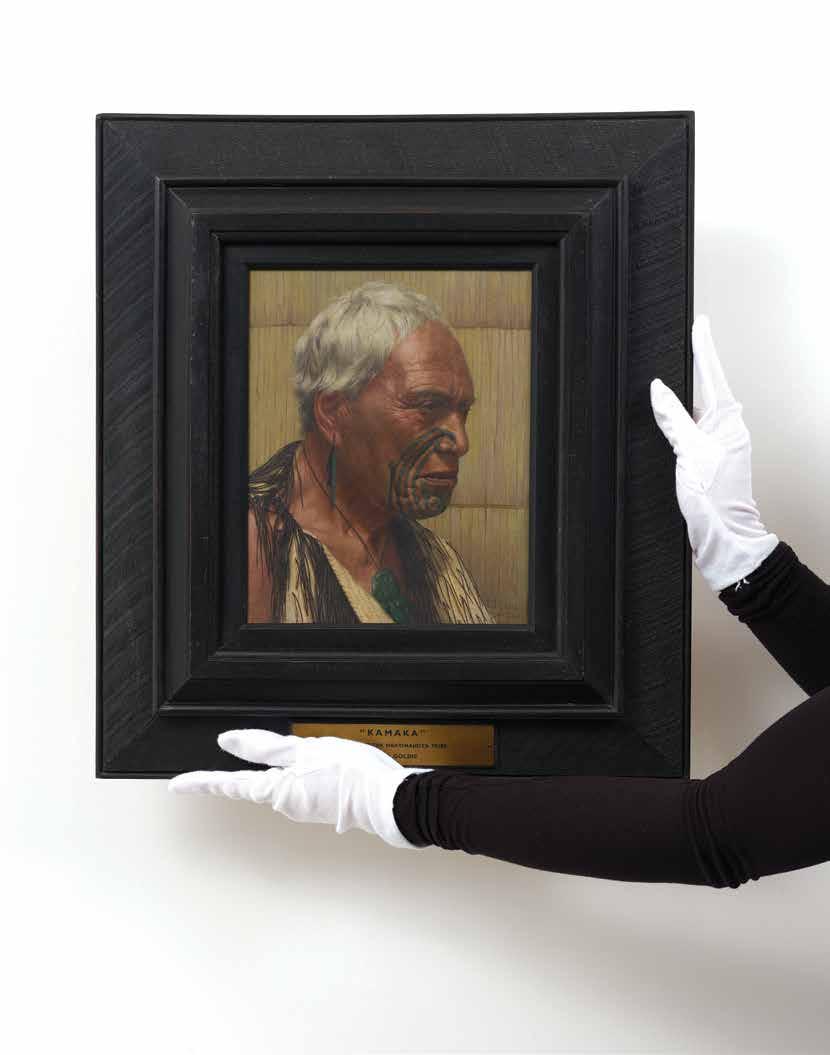
Through his lifetime and legacy Charles Frederick Goldie greatly influenced our nation’s artistic and cultural consciousness. Born in Auckland on 20 October 1870, one of eight children from the marriage of Maria Partington and David Goldie, he was named after his maternal grandfather, Charles Frederick Partington, builder of the landmark Auckland windmill.
In 1883 the young Goldie was enrolled at Auckland Grammar School. His youthful artistic talents shone and it was not long before he was winning prizes at the Auckland Society of Arts. On leaving school Louis John Steele became his mentor and tutor. Two of the young artist’s still life paintings so impressed Sir George Grey that he convinced David Goldie to allow his 22 year old son to attend the Académie Julian in Paris. Goldie spent over four years at the Académie Julian tutored by leading lights of the Paris Salon such as William-Adolphe Bouguereau.
In 1898, fully informed in the French academic style, the artist returned to New Zealand and began collaborating with his former tutor Louis John Steele. The two worked on a number of paintings including The Arrival of the Maoris in New Zealand, a large scale history painting after Gericault’s Raft of the Medusa. Before long, however, the relationship deteriorated likely caused by tensions around the former student’s growing success. Goldie went on to open his own studio and establish himself as a successful portraitist of Maori.
A visit to Rotorua in 1901 was the first of several field trips during which the artist was introduced to local Maori and persuaded them to sit for portraits. Goldie’s works from this point forward strongly reflect the European tradition in which he was trained, and possess a stunning power and visual clarity. On the one hand his remarkable dedication to realism belies an ethnographic interest, at the same time he was also striving to capture the mana of his sitters who included chiefs, tohunga and kaumatua.
Goldie formed long-standing relationships with several Maori he met and painted around this period, including Wiremu Patara Te Tuhi and Te Aho-o-te-rangi Wharepu (Ngati Mahuta), Ina te Papatahi (Nga Puhi), and Wharekauri Tahuna (Ngati Manawa).
Over the next two decades Goldie gained national and international acclaim and steady demand formed a strong market for his portraits. A number of which would later be exhibited at the Royal Academy of Arts in London and the Paris Salon throughout the 1930s.
In 1920 the artist moved to Sydney, where despite original plans to continue on to Paris, he was married, at age fifty to thirty five year old Olive Cooper. Marriage in Sydney circumvented the Goldie family disapproval of the relationship between Auckland’s famous artist and the milliner from Karangahape Road. After two years in Sydney, apparently disillusioned with his work at this time and suffering from health problems Charles and Olive returned to New Zealand.
Goldie’s return to Auckland in 1924 ultimately represented a moment of artistic reckoning. Goldie received encouragement to resume painting from Governor General Lord Bledisloe. Devoting himself once again to his work he began to apply a more liberal, impressionistic approach to the realisation of his portraits and repainted a number of his former subjects. Works from this later period are distinguished by their soft luminescence, offering a rhythmic departure and disconnection from the rigours of formalism to which he had so strictly adhered in the past.
Goldie died in Auckland in 1947, his exquisite, spirituallycharged, often unsettling and ever powerful portraits of Maori having made an unsurpassed contribution to the history of art in New Zealand.
Sophia Oil on board 19 x 14
Signed & dated 1912
Artist’s original catalogue label affixed verso $450,000 - 650,000
Private Collection, Auckland Acquired 1912 by the current owner, by descent
Guide Sophia Hinerangi was the principal tourist guide of the Pink and White Terraces at Lake Rotomahana. Following their destruction during the Tarawera eruption of 1886 she became a guide at nearby Whakarewarewa, Rotorua. Guide Sophie, as she was widely known, was well educated and bi-lingual. She introduced thousands of visitors to the beauty of the Terraces, acknowledged by Mark Twain as the eighth wonder of the world.
Sophia was born in Kororareka in the early 1830s. Her mother, Kotiro Hinerangi, was a Ngati Ruanui woman who had possibly been captured by a Nga Puhi raiding party. Kotiro married Alexander Grey (or Gray), a Scotsman who had arrived in the Bay of Islands in 1827. Mary Sophia Gray was baptised by William Williams at Kororareka in 1839. It is thought that Sophia was raised by Charlotte Kemp at the Kerikeri mission station before attending the Wesleyan Native Institution at Three Kings, Auckland. In 1851 Sophia married her first husband, Koroneho (Colenso) Tehakiroe, with whom she had fourteen children. Following her second marriage, to Hori Taiawhio in 1870, she had a further three children.
Tuhourangi tohunga, interpreted the devastating Tarawera eruption as a warning and reflected that the exploitation of the terraces as a tourist attraction showed scant regard for ancestral values. Guide Sophia herself saw these omens as a sign that her time as a guide at Rotomahana was drawing to a close.
On 10 June 1886, the night of the eruption, over sixty people took shelter in Sophia’s whare at Te Wairoa. Unlike many of the buildings in the village her home withstood the destructive power of the eruption due to its highpitched roof and strong reinforced timber walls. Tuhoto Ariki also survived the eruption and was dug from his buried house four days later. Sophia continued her work as a guide when she moved to nearby Whakarewarewa. In 1895 she joined George Leitch’s Land of the Moa Dramatic Company, playing herself on a tour of Australia.
In 1896 she was appointed caretaker of the Whakarewarewa Thermal Reserve. A number of royal parties were amongst the many thousands of visitors that Guide Sophia led through Whakarewarewa. She encouraged a number of local women to become guides, helping to establish this occupation as a lucrative form of employment for Tuhourangi women. Sophia was also deeply involved in the New Zealand Women’s Christian Temperance Union, becoming president of the Whakarewarewa branch in 1896. Remembered as a leading light of her generation and a unique personality, Sophia fostered friendship between Maori and Pakeha and showed great courage in adversity. She was a friend and favoured subject the artist C F Goldie. Guide Sophia died at Whakarewarewa on 4 December 1911.

A Chief of the Ngatimahuta Tribe Te Kamaka, Ngati Maniapoto, 1916 - ‘The Whitening Snows of Venerable Eld’
Oil on canvas 26 x 19
Signed & dated 1916
$700,000 - 1,000,000
PROVENANCE
Private Collection, by descent Acquired from Bethune’s Auction, Wellington, 2 September 1964
EXHIBITED
Auckland Society of Arts, 37th Annual Exhibition
Auckland, 1918, cat no.75
Robert McDougall Art Gallery, Christchurch, 1969. Original Robert McDougall Art Gallery label affixed verso
REFERENCE
Alister Taylor and Jan Glen, C F Goldie: His Life & Painting, (Auckland: Alister Taylor Publishers, 1977), p.238
Charles Frederick Goldie’s 1916 portrait of Te Kamaka is nothing short of an artistic tour de force. In executing this work, Goldie deployed technical finesse, allowing him to powerfully express the likeness and mana of his sitter.
Goldie painted Te Kamaka, a rangatira of Ngati Maniapoto, on at least four occasions between 1916 and 1921. The series of portraits of Te Kamaka are catalogued in C F Goldie, His Life & Painting by Alister Taylor & Jan Glen (Martinborough 1977) as follows: Te Kamaka, 1916, The Diplomatist, Te Kamaka - a chieftain of the Ngati Maniapoto, Tribe, King Country, 1918, The Aristocrat Te Kamaka, Ngati Maniapoto tribe, Aged 90 Years.
The present work is a sensitive and reverent rendering of Te Kamaka, comprising careful yet spirited, visible brushstrokes. It has been composed with such precision as to avoid obfuscating the finer detail of the sitter’s visage, but is also expressive enough in its painted manner to
enhance the effect of the work’s ambient light interplay; illumination is derived from a strong singular light source coming from the left of the painting.
Goldie’s portraits of Maori are celebrated for their ability to realistically capture the mana and likeness of his sitters. Writing on the 1918 exhibition of the Auckland Society of Arts, the reviewer for the New Zealand Herald observed: Mr. Goldie’s work consists of small portraits, finished with his characteristic perfection of detail, and splendidly typical of the Maori, in whom he finds such constant inspiration. (31 May 1918). Amongst the works on display in the exhibition was the painting depicted here of Te Kamaka titled ‘The Whitening Snows of Venerable Eld’: Kamaka An Chieftain of the Maniapoto Tribe (Aged 90 Years). The title of this work was taken from James Thompson’s allegorical poem The Castle of Indolence (1748). Goldie regularly titled his paintings with phrases borrowed from British poetry.
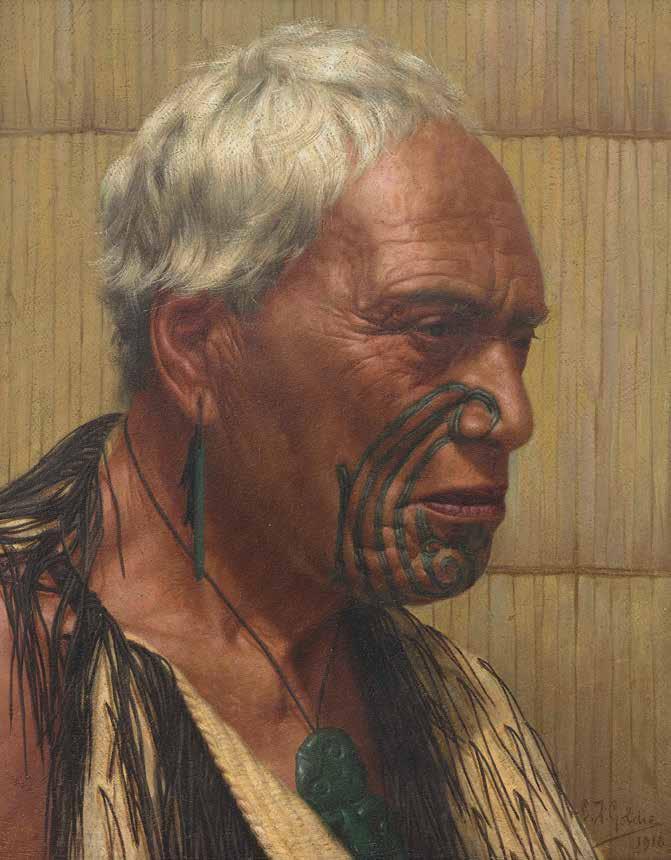
The Blind Model, Julian’s Academy, Paris 1897 Oil on canvas 41 x 33
Signed & dated Paris 1897
Label inscribed verso, Charles Frederick Goldie
The Blind Model oil on canvas, Gold Medal Louis Academy in Paris
$150,000 - 250,000
PROVENANCE
Acquired from Olive Goldie by current owner, by descent
ILLUSTRATED
Roger Blackley, Goldie, Auckland Art Gallery Toi o Tamaki (David Bateman, 1997) pg.77
EXHIBITED
Auckland Art Gallery, Goldie Exhibition, 28 June28 October 1997. Cat. no.42
In 1883 the young Goldie was enrolled at Auckland Grammar School. His youthful artistic talents shone, and it was not long before he was winning prizes at the Auckland Society of Arts. On leaving school Louis John Steele became his mentor and tutor. Two of the young artist’s still life paintings so impressed Sir George Grey, that he convinced David Goldie to allow his 22 year old son to attend the Académie Julian in Paris.
In July 1893, at the age of 22, Goldie enrolled at the cosmopolitan Académie Julian. For four and a half years, until January 1898, he studied in the studio supervised by the eminent Salon painter William-Adolphe Bouguereau. He also enjoyed tuition from lesser-known masters, including Gabriel Ferrier and attended anatomy classes at the École des Beaux-Arts. Goldie won regular prizes in the studio competitions and in 1896 was awarded a gold medal for life painting. He undertook the customary copying of old masters in the Louvre and other galleries, and visited Great Britain, Belgium, Holland, Germany and Italy. Although a number of other New Zealand artists studied art in Paris, few stayed for more than a year or two. Charles Goldie was the only one of his generation to undertake the full rigours of French academic training.
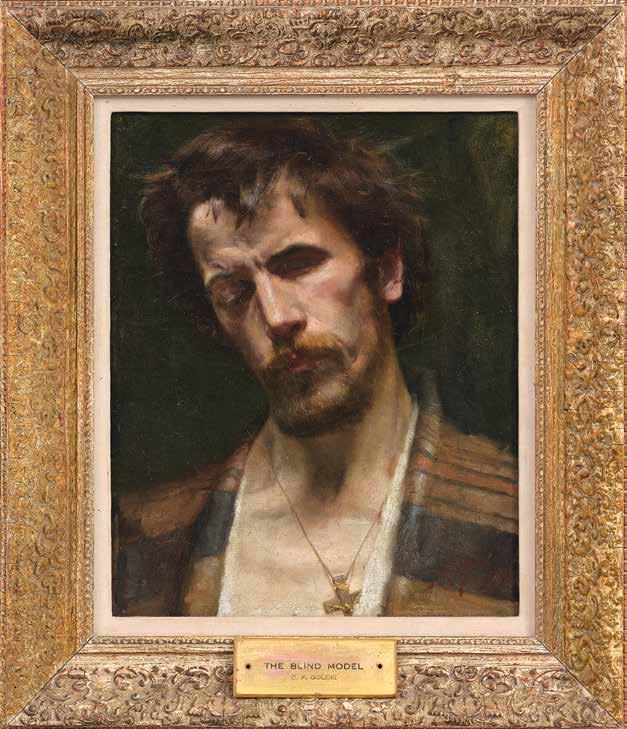
The Crucifixion, after Prud’hon, Louvre Gallery, Paris 1897
Oil on canvas 23.5 x 18.5
Signed & dated 1897
Label inscribed verso, Study of the Crucifixion after Prud’hon - oil on canvas
$50,000 - 75,000
PROVENANCE
Acquired from Olive Goldie by current owner, by descent
ILLUSTRATED
Roger Blackley, Goldie, Auckland Art Gallery Toi o Tamaki (David Bateman, 1997) pg.72
EXHIBITED
Auckland Art Gallery, Goldie Exhibition, 28 June28 October 1997. Cat no.31
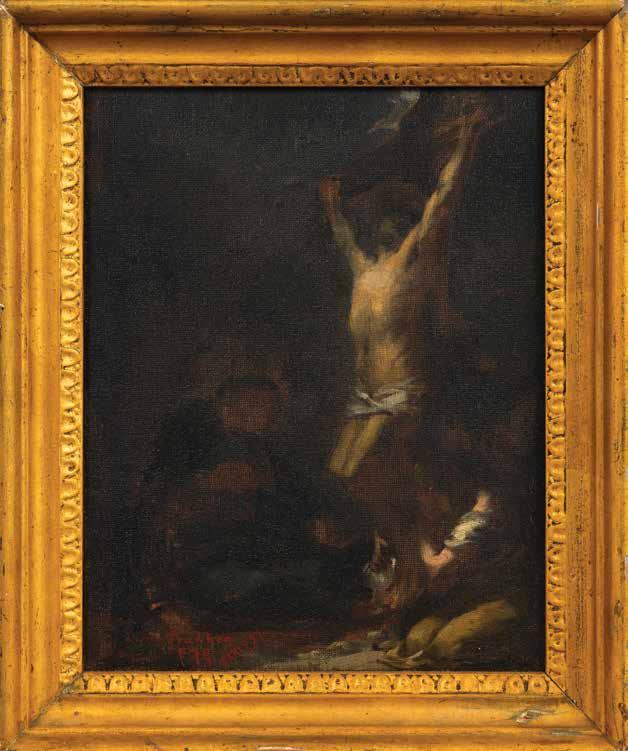
58 CHEONG
PIENG (Singaporean 1917 - 83)
Mothers Children Oil on board 40 x 29.5
Signed & dated 1977 verso
$80,000 - 120,000
Private Collection, Auckland
Acquired from Rick House of Ceramic and Arts, Singapore, original label affixed verso
Regarded as a leading figure within Singapore’s art history, Cheong Soo Pieng is known for his distinctive style, which stemmed from a profound understanding of easel painting and Chinese aesthetics. A pioneer of the Nanyang art style and a key figure in Singapore modern art scene, Cheong Soo Pieng established a unique and wide-ranging repertoire of styles and mediums.
The landmark Bali trip in 1952 that inspired Cheong Soo Pieng (and 3 other pioneer artists, Chen Wen Hsi, Chen Chong Swee and Liu Kang) to reinvent groundbreaking pictorial modes culminating to the Nanyang art style has been celebrated as a ‘watershed’ moment in the development of Singapore modern art scene.

Marrying pictorial techniques of European Modern Art styles such as Fauvism and Cubism with Southeast Asian themes, some distinct features of Nanyang style include a bold colour palette, a cubist treatment and the use of black outlines to accentuate planes and objects.
A life-changing sojourn in Europe from 1961 to 1963 broadened Soo Pieng’s perspectives and gravitated his experimentation towards abstraction and the mixed media. Successful exhibitions during his time in Europe, including solo shows at the Frost & Reed Gallery (London), Redfern Gallery (London) and Galerie Schoninger (Munich).
The late 1970s saw a return to Soo Pieng’s earlier practice, focusing on Southeast Asian subjects particularly of Malaya, Sarawak and Bali. Soo Pieng stylised these figures by depicting them with long exaggerated limbs and almond-shaped eyes, drawing influence from both wayang kulit puppets and modernist artists such as Amedeo Modigliani and Alberto Giacometti. This was to become Soo Pieng’s most emblematic series. An increasingly reflexive Soo Pieng played with the ways of seeing embedded within the oil and ink traditions. In his oil paintings, Soo Pieng used a variety of framing features to form pictures within pictures, emphasising the multi-varied lenses through which the Southeast Asian subjects had been viewed over the years. With inks, he localised the ink tradition by creating Nanyang scrolls, complete with indigenous material culture and grounded his identity as a diasporic Chinese artist.
Cheong Soo Pieng is internationally recognised as one of Singapore’s most important pioneering artists, one who perhaps most successfully blended together the various art traditions that converged in this region.

Gillman House
Stained glass window 267 x 81
$80,000 - 120,000
PROVENANCE
Private Collection, Auckland
LITERATURE
Bridget Hackshaw, The Architect and the Artists: Hackshaw McCahon Dibble: The collaborative projects 1963-1979, (Massey University Press, Auckland, 2021) p.221
It is extremely rare, possibly even unprecedented, for a work in glass by Colin McCahon to come up for auction. There is a simple explanation for this. Such works were never made for sale on the open market. They were invariably commissioned, mostly by Roman Catholic churches or schools and in three cases by private citizens who wanted glass windows by McCahon in their houses. This beautiful window is one of these. It was commissioned for a house in Remuera by Dr John and Peggy Gillman in 1979. The Gillmans were friends of the architect James Hackshaw who was directly involved in all twelve of McCahon’s glass commissions between 1965 when he engaged the artist to provide painted windows for the clerestory of the Convent Chapel of the Sisters of Our Lady of the Missions in Upland Road, Remuera and 1979 when he asked McCahon for a window for the Gillmans’ house which he was renovating. This window was the last of McCahon’s works in glass.
The full story of McCahon’s remarkable, if under-publicised activities as a glass artist in the last phase of his career, has been told in extensive and richly illustrated detail by the architect’s daughter Bridget Hackshaw in The Architect and His Artists: Hackshaw McCahon Dibble (Massey University Press, 2021). However, although she writes about the Gillman window and illustrates it with a contemporary photograph, Hackshaw wrongly believed that the window had not survived the 1980s demolition of the house for which it was made. She wrote: The developer tried to find the vendor, but he was unsuccessful and it is believed that the window was destroyed (p. 221). But this was not the case. The window was preserved by the original owners and has now been brought to auction.
In a letter to his Wellington dealer, Peter McLeavey, McCahon explained that he had worked on the commission for most of 1979. On December 2 he wrote: I’m still working
on the Dr Gillman glass. At long last it’s all installed and looks magnificent. It’s really great with its great ¼ inch plate, clear bevelled diamond in the middle. The surrounding colour is superb... (quoted in Hackshaw, p. 222). Apparently the design of the window was somewhat changed when the company providing the steel framework for the glass went out of business, and the steel had to be replaced by a wooden armature. Such changes and tribulations are nowhere evident in the finished window which gives every impression of being superbly resolved and complete.
Since most of McCahon’s works in glass were for Catholic schools, chapels and churches, religious imagery predominates, including crosses, Christograms such as INRI, IHS and XP, plus the symbolic use of coloured glass. Even so, figurative and abstract imagery is also sometimes employed, as in the multiple hill shapes in a window of St Patrick’s Church in Te Puke. In windows for private houses McCahon opted for secular imagery – a kauri tree inone,multiplelandscapesinanother,andpuregeometric abstraction in a third (the Gillman window).
McCahon had previously used a central diamond shape in a pair of corner windows for Baradene College in Remuera. In utilising this shape in combination with square and rectangular panels he was also consciously alluding to the windows of colonial Auckland villas – designs that he also referenced in a 1959 painting Landscape through a Victorian window (University of Auckland). McCahon also borrowed the shark-tooth pattern from Maori design in triangular inserts into the narrow edge-panels of the window. In terms of colour he surrounds the clear glass of the central shape with squares of blue and green, and rectangles of red and yellow – a superbly colourful and harmonious effect.
PETER SIMPSON

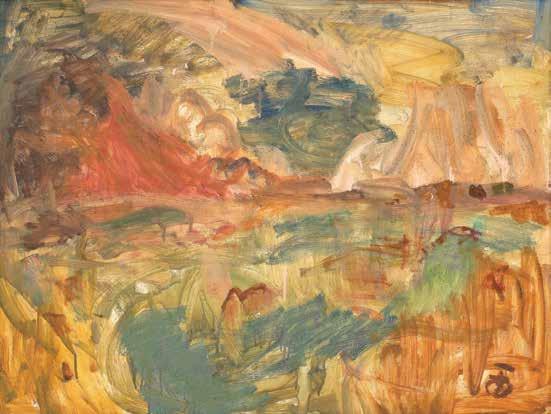

60 TOSS WOOLLASTON (1910 - 98)
Untitled Oil on board 60 x 80
Signed with Monogram
$25,000 - 35,000
PROVENANCE
Private Collection, Auckland
61 TOSS WOOLLASTON (1910 - 98)
Deep in Thought
Watercolour 45.3 x 29.7
Signed & dated 1974
$4,000 - 6,000
PROVENANCE
Private Collection, New Plymouth

62 GARTH TAPPER (1927 - 99)
The Architects Oil on canvas 73 x 100
Signed & dated 1982
$20,000 - 30,000
PROVENANCE
Private Collection, Auckland
63 CHARLES BLOMFIELD (1848 - 1926)
Pink and White Terraces, Rotomahana - A Pair
Oil on canvas 60 x 95
Signed & dated 1896 (White); Signed & dated 1897 (Pink)
$50,000 - 75,000
Private Collection, Waipukurau
Purchased directly from the artist, by descent
Charles Blomfield has long been recognised as the most popular early New Zealand painter of the Pink and White Terraces and the surrounding region of Rotorua and Lake Tarawera. This exceedingly fine work, Pink and White Terraces, dated 1883 pre-dates the 1886 Tarawera eruption.
Blomfield first visited the region during a camping trip in December 1875, commenting that Tarawera and it’s Terraces were exceedingly beautiful and graceful. Returning in 1883 he spent six weeks documenting the Pink and White Terraces and their surroundings. Blomfield’s meticulous sketches and finished paintings are some of the most important historical records we have of the region. It was reported that by September 1885 orders for his work had been received from throughout Europe, America, Australia and other places.
Following the Tarawera eruption, Blomfield realised that the paintings he had made of the Terraces were a valuable record and declined to sell them. He went on to paint and sell scale copies of these works, for which the prices soon trebled. After 1886 Blomfield continued to travel throughout New Zealand painting oils of mountains, rivers, lakes and cloud effects, his greatest love remained the native bush, of which he wrote enthusiastically in his diary.
The story of the Tarawera eruption is a dramatic chapter in New Zealand’s history. Eleven days before the eruption, both Maori and European visitors, including the famous Guide Sophia, reported seeing a ghostly Maori war canoe paddling across Lake Tarawera.
Guide Sophia consulted her tribe’s tohunga, or priest, Tūhoto Ariki, and he interpreted the phantom canoe as a bad omen. He believed Maori would be punished for exploiting the area for money without paying due respect to their ancestors.
In the early hours of 10 June, 1886 Tuhoto Ariki’s prophecy was fulfilled. At Te Wairoa village, about eight kilometres away from the Terraces, people were woken after midnight by a series of violent earthquakes. Around 2 am Tarawera erupted with fountains of glowing lava and a cloud of ash up to ten kilometres high through which intense lightning flickered. At Te Wairoa, more than sixty people sheltered in Guide Sophia’s sturdy hut, which remarkably survived the eruption. Later, craters on the south-west side of the mountain blasted open and a crack 17 kilometres long emitted tons of mud and ash. The Tikitapu bush was completely covered by ash and earthquakes were felt throughout the North Island with the noise of the eruption heard as far south as Blenheim. At the time, many Aucklanders thought they were hearing distant cannon fire. Blomfield decided to see the devastation for himself and returned to the area in October to paint several scenes of the terrible destruction.
A world away fourteen Charles Blomfield paintings were being greatly admired in South Kensington, London at the 1886 Colonial and Indian Exhibition. This major exhibition, which in the words of the Prince of Wales was intended to: stimulate commerce and strengthen the bonds of the British Empire was opened by Queen Victoria and received over five million visitors. Charles Blomfield died at his residence in Wood Street, Freemans Bay, Auckland in 1926.
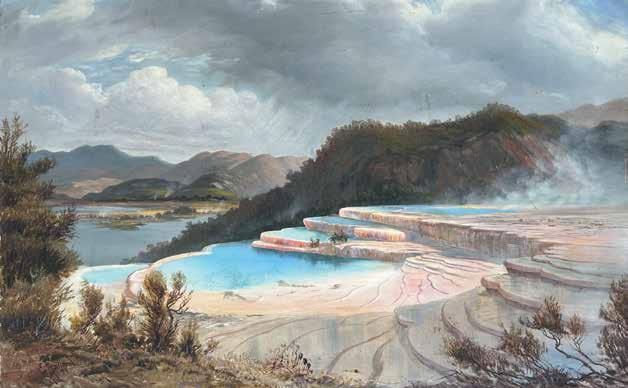
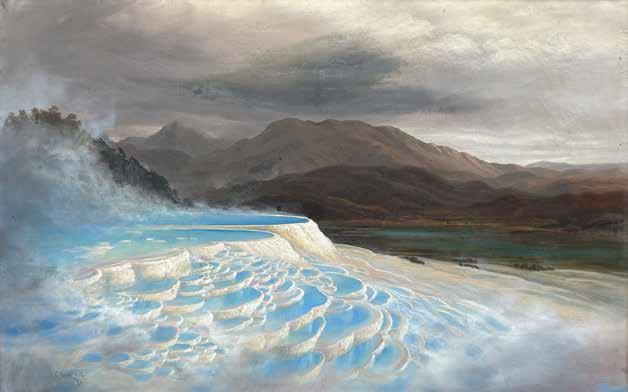
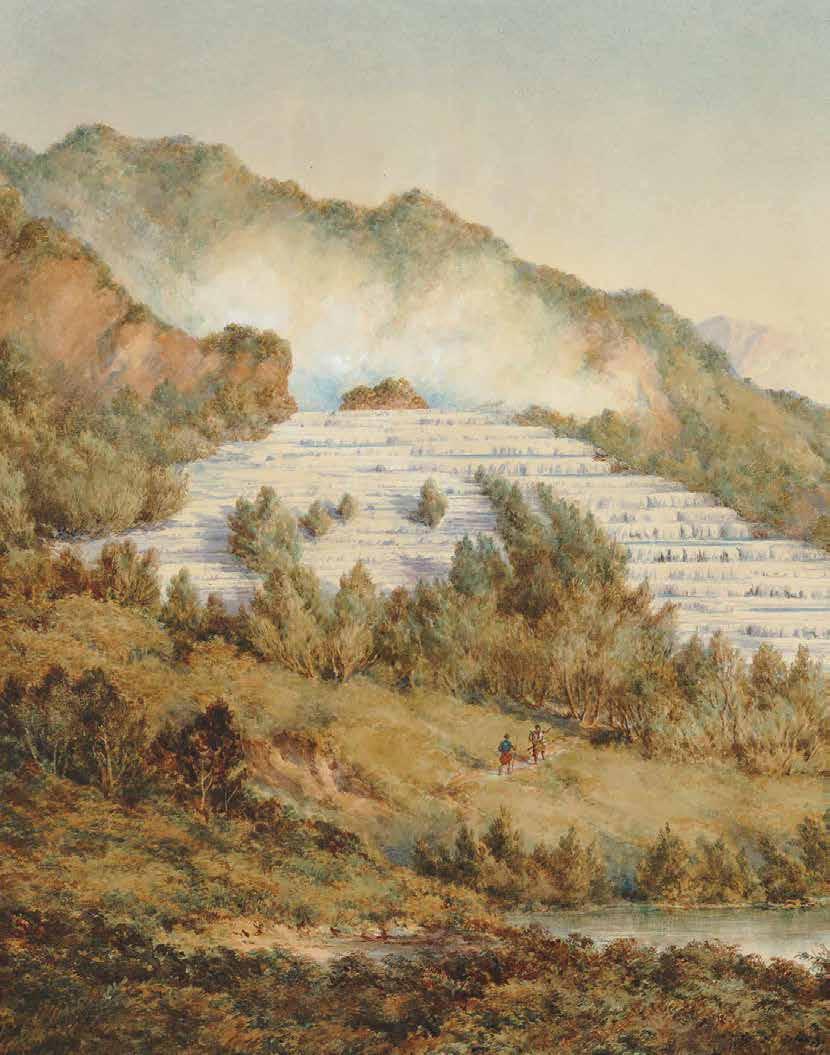

Lots 64 - 75
A set of twelve fine views of New Zealand from the collection of Frederick Gonnerman Dalgety, one of the greatest of all collectors of contemporary painting in the Antipodes in the 19th century. Masterpieces from Dalgety’s collection which were hung at Lockerly Hall, Hampshire, notably Australian and New Zealand subjects by Eugene von Guerard and William Strutt, were sold by the Dalgety family between 1970 and 2015 and now hang in the Museum of New Zealand Te Papa Tongarewa, Wellington, Auckland Art Gallery Toi o Tāmaki, the Art Gallery of New South Wales, Sydney, and Geelong Gallery, Victoria.
A Canadian-born merchant, financier and founder of the pastoral and agricultural company, Dalgety and Company, Frederick

Dalgety arrived in Australia in 1834. His wool merchandising and financing business took off during the gold rush years in Melbourne and funded his art collecting in Victoria from the 1850s. His company was registered in London and listed on the London Stock Exchange in 1884, by which time he had sold his Australian properties but remained the owner of seven stations in New Zealand on his death in 1894.
Dalgety and Company continued to thrive after its founder’s death, with offices throughout Australia and New Zealand, and continued with offices in both hemispheres through the 20th and into the 21st century as Dalgety plc, and latterly as PIC, now under the parent Genus plc. 65

64
CHARLES DECIMUS BARRAUD (1850 - 1897)
Te Tarata, The White Terrace, Rotomahana, New Zealand
Watercolour heightened with white on paper
43 x 73.5
Signed & dated CD Barraud 1879 (lower right)
$25,000 - 35,000
PROVENANCE
Frederick Gonnerman Dalgety (1817-1894), and thence by descent to the present owner
A variant painted in 1875 was reproduced in chromolithograph in Barraud’s New Zealand Graphic and Descriptive, London, 1877 (‘Te Tarata Roto-Mahana’), Ellis 906). There is a smaller (30.4 x 51cm) and later variant dated 1881 in the Museum of New Zealand Te Papa Tongarewa, (‘The White Terraces’ 1936-0012-281)
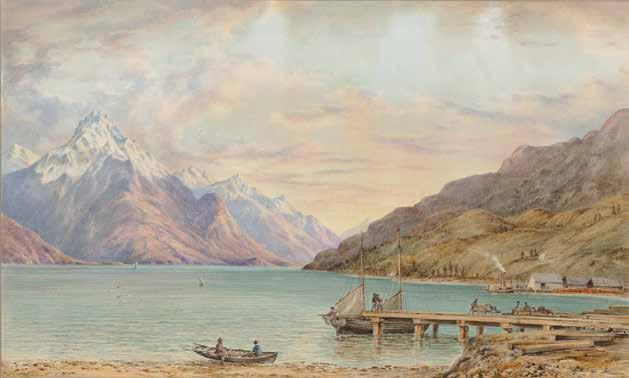
65
CHARLES DECIMUS BARRAUD (1850 - 1897)
Lake Wakatipu, from Queenstown, looking towards Walter Peak New Zealand
Pencil & watercolour heightened with white and scratching out on paper 43 x 73.5
Signed & dated CD Barraud 1881 NZ (lower right)
$15,000 - 25,000
PROVENANCE
Frederick Gonnerman Dalgety (1817-1894), and thence by descent to the present owner

66
CHARLES DECIMUS BARRAUD (1850 - 1897)
Upper Lake Mavora, Otago, New Zealand, Surveyors Camping
Pencil & watercolour heightened with white and scratching out on paper 43 x 73.5
Signed & indistinctly dated CD Barraud 1878 (lower left)
Signed & titled Upper Lake Mavora – Otago
N. Zealand Surveyors Camping – by CD Barraud
Wellington, N.Z. No.5 on the original exhibition label verso $15,000 - 20,000
PROVENANCE
Frederick Gonnerman Dalgety (1817-1894), and thence by descent to the present owner

67 CHARLES DECIMUS BARRAUD (1850 - 1897)
The Head of Lake Wakatipu, from Kinloch, New Zealand
Pencil & watercolour heightened with white and scratching out on paper 43 x 73.5
Signed CD Barraud NZ (lower right)
$15,000 - 20,000
PROVENANCE
Frederick Gonnerman Dalgety (1817-1894), and thence by descent to the present owner

68 CHARLES DECIMUS BARRAUD (1850 - 1897)
Wet Jacket Arm, Dusky Sound, West Coast, New Zealand
Pencil & watercolour heightened with white and scratching out on paper 43 x 73.5
Signed & titled Wet Jacket Arm, Dusky Sound West Coast, New Zealand by CD Barraud
Wellington N.Z. No.2 on the original exhibition label verso. Signed, titled, dated and certified by the artist on a ‘Special Form of Indorsement for the Picture’ attached to the backing paper
$15,000 -20,000
PROVENANCE
Frederick Gonnerman Dalgety (1817-1894), and thence by descent to the present owner

69 CHARLES DECIMUS BARRAUD (1850 - 1897)
Lake Manapouri, Evening, New Zealand
Pencil & watercolour heightened with white and scratching out on paper 43 x 73.5
Signed & dated CD Barraud NZ 1881
$10,000 - 15,000
PROVENANCE
Frederick Gonnerman Dalgety (1817-1894), and thence by descent to the present owner

70 CHARLES DECIMUS BARRAUD (1850 - 1897)
The Amuri Plains, Canterbury, From Black Birch Gully, Near Culverden, New Zealand
Pencil & watercolour heightened with white and scratching out on paper 43 x 73.5
Signed & dated CD Barraud NZ 1881 (lower left)
$8,000 -12,000
PROVENANCE
Frederick Gonnerman Dalgety (1817-1894), and thence by descent to the present owner

71 CHARLES DECIMUS
(1850 - 1897)
Manawatu Gorge, Province of Wellington New Zealand
Pencil and watercolour heightened with white and scratching out on paper 43 x 73.5
Signed & indistinctly dated CD Barraud NZ 1881 (lower right)
$8,000 - 12,000
PROVENANCE
Frederick Gonnerman Dalgety (1817-1894), and thence by descent to the present owner

72 CHARLES DECIMUS BARRAUD (1850 - 1897)
The Weka Pass, Canterbury, New Zealand
Pencil and watercolour heightened with white and scratching out on paper 43 x 73.5
Signed CD Barraud (lower left)
$10,000 - 15,000
PROVENANCE
Frederick Gonnerman Dalgety (1817-1894), and thence by descent to the present owner
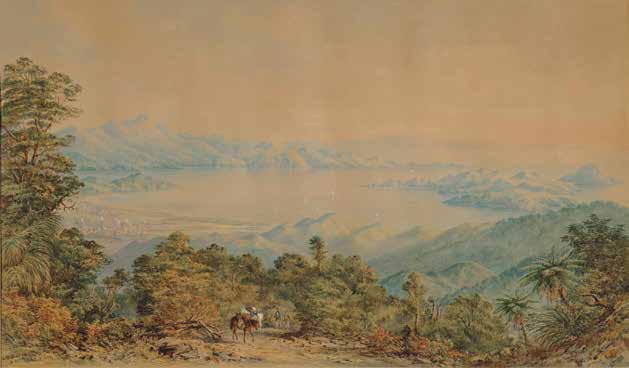
73
CHARLES DECIMUS BARRAUD (1850 - 1897)
Coromandel, New Zealand
Watercolour heightened with white on paper 43 x 73.5
Signed & dated CD Barraud NZ 1880 (lower left)
Signed, numbered One, titled, dated and certified by the artist on a ‘Special Form of Indorsement for the Picture’ attached to the backing paper
$8,000 - 12,000
PROVENANCE
Frederick Gonnerman Dalgety (1817-1894), and thence by descent to the present owner

74
CHARLES DECIMUS BARRAUD (1850 - 1897)
Mount Pembroke, Milford Sound, West Coast, New Zealand
Pencil & watercolour heightened with white and scratching out on paper 43 x 73.5
Signed, dated & titled CD Barraud NZ 1880 (lower right), signed & titled Mount Pembroke - Milford
Sound West Coast - New Zealand by CD Barraud
Wellington N.Z. No.4 on the original exhibition label attached verso
$8,000 -12,000
PROVENANCE
Frederick Gonnerman Dalgety (1817-1894), and thence by descent to the present owner

75 CHARLES DECIMUS BARRAUD (1850 - 1897)
Dusky Sound, South Arm, West Coast, New Zealand
Watercolour heightened with white on paper 43 x 73.5
Signed & dated CD Barraud 1879 (lower left)
Signed and titled Dusky Sound – South Arm West Coast, New Zealand by CD Barraud
Wellington N.Z. No.1 on the original exhibition label attached to the backing paper and signed, titled, dated and certified by the artist on a ‘Special Form of Indorsement for the Picture’ attached to the backing paper verso
$8,000 - 12,000
PROVENANCE
Frederick Gonnerman Dalgety (1817-1894), and thence by descent to the present owner

(detail)
Surveyors Camping
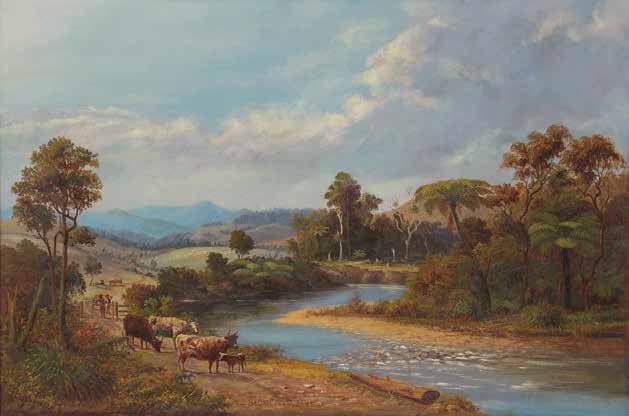
76 CHARLES BLOMFIELD (1848 - 1926)
Henderson Creek Oil on canvas 50 x 80
Signed & dated 1886
$10,000 - 15,000
PROVENANCE
Private Collection, Auckland
77 JOHN BARR CLARKE HOYTE (1835 - 1913)
Pink & White Terraces Rotomahana with Mount Tarawera Beyond Watercolour 39 x 66
Signed with initials
$20,000 - 30,000
PROVENANCE
Private Collection, Auckland
78 JOHN BARR CLARKE HOYTE (1835 - 1913)
Te Tarata, White Terraces, Rotomahana Watercolour 38 x 64
Signed & dated indistinctly
$20,000 - 30,000
PROVENANCE
Private Collection, Auckland





79 JOHN BARR CLARKE HOYTE (1835 - 1913)
Pink & White Terraces - A Pair
Watercolour 22 x 40
Signed
Titled, inscribed and dated c.1877 verso
$8,000 - 12,000
PROVENANCE
Private Collection, Auckland
80 ALFRED SHARPE (1836 - 1908)
Untitled - Bush Scene with Figure
Watercolour 40 x 60
Signed & dated 1891
$20,000 - 30,000
PROVENANCE
Private Collection, Australia
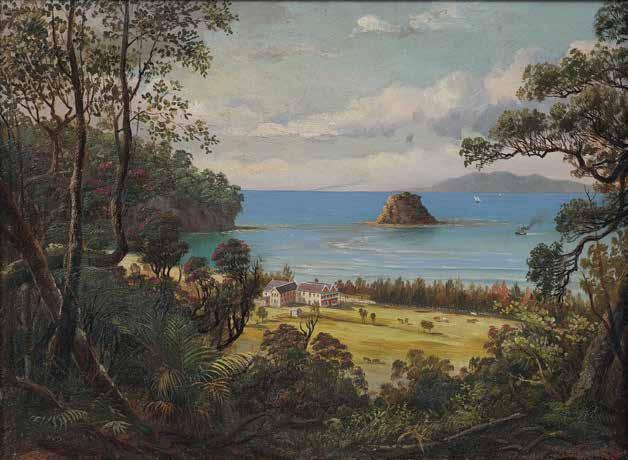
81 CHARLES BLOMFIELD (1848 - 1926)
Wairewa, North of Auckland Oil on board 29 x 39
Signed
$4,000 - 8,000
PROVENANCE
Private Collection, Auckland
82 PETRUS VAN DER VELDEN (1837 - 1913)
Girl in Window Oil on board 73 x 45
Signed
$15,000 - 25,000
PROVENANCE
Private Collection, Queenstown
A similar work is illustrated p 40, image number 1.2.235. That work is titled: ‘Girl Knitting by an Open Door’, T L Rodney Wilson , Van der Velden Volume II A Catalogue Raisonné, (Chancery Chambers Publishers, Sydney, 1979)
Cat. no. 2.1.2.4

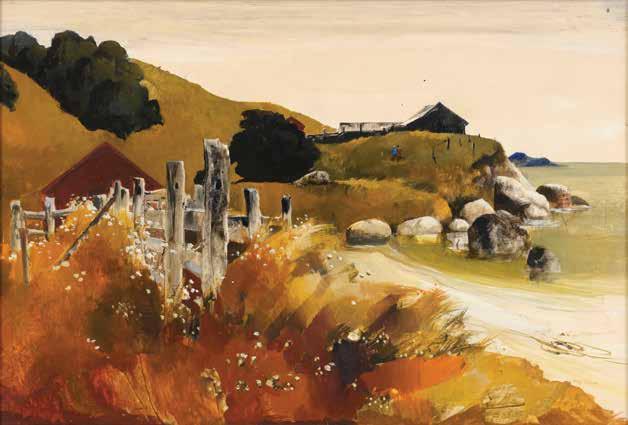


83
PETER MCINTYRE (1910 - 95)
Coastal Landscape
Oil on board 62 x 90
Signed
$15,000 - 25,000
PROVENANCE
Private Collection, Auckland
84 PETER MCINTYRE (1910 - 95)
Rangitikei River Through the Trees
Oil on canvas 32.5 x 50.5
Signed
$12,000 - 15,000
PROVENANCE
Private Collection, Auckland
85 PETER MCINTYRE (1910 - 95)
Old Madrid - New Mexico Ghost Town
Tempera on paper 54 x 69.2
Signed
$10,000 - 15,000
PROVENANCE
Private Collection, United Kingdom
Empty Windows stare sightlessly into space, and whispers of forgotten voices seem to echo in the evening stillness. In all the sad emptiness I found one shop where a coin-operated box ground out a tune by mechanically pulling a bow across a nostalgic violin. - Peter McIntyre

Gossiping Women
Oil on board 65.5 x 80.3
Signed $12,000 - 15,000
PROVENANCE
Private Collection, Dunedin
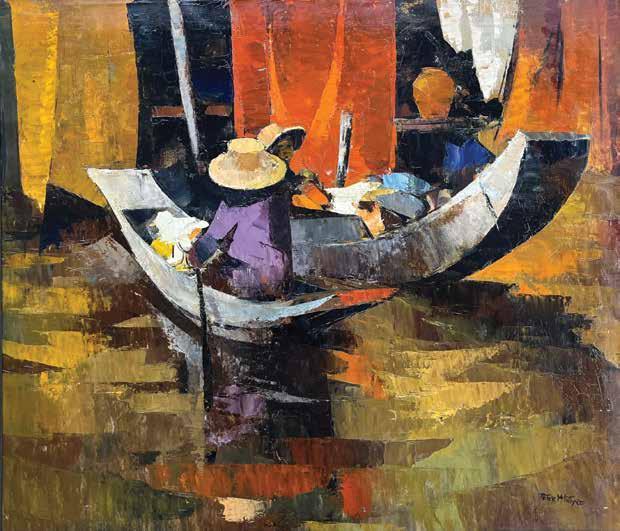
Signed
$8,000 - 12,000
PROVENANCE
Private Collection, Auckland
ILLUSTRATED
Peter McIntyre, Peter McIntyre’s Pacific, (Lane Magazine and Book Co., 1970) plate 37
Thai Silk is a home industry and so along the waterways sudden splashes of glorious colour enrich the already colourful scene as the silks are hung up to dry. Bits of coloured glass, bits of broken crockery, pebbles and what-have-you, all stuck into cement in an orgy of profusion: that is a temple.
- Peter McIntyre

88 PETER MCINTYRE (1910 - 95)
Mending the Nets
Watercolour 46 x 68
$10,000 - 15,000
PROVENANCE
Private Collection, Auckland
89 PETER MCINTYRE (1910 - 95)
Totem Poles - Vancouver, British Columbia
Tempera and ink on board 66 x 73.5
Signed
$8,000 - 12,000
PROVENANCE
Private Collection, United Kingdom
ILLUSTRATED
Peter McIntyre, Peter McIntyre’s West, (AH & AW Reed, Wellington, 1970) plate 52
90 PETER MCINTYRE (1910 - 95)
Junks in Hong Kong Harbour Oil pastel & graphite on paper 47 x 49.5
Signed
$3,000 - 6,000
PROVENANCE
Private Collection, Auckland



Signed
$8,000 - 12,000
PROVENANCE
Private Collection, Masterton

92 SYDNEY LOUGH THOMPSON (1877 - 1973)
On the Waterfront, Concarneau, Brittany Oil on canvas 45.5 x 55
Signed
Inscribed On the Waterfront, Concarneau, Brittany on stretcher & original H Fisher & Son label affixed verso
$20,000 - 28,000
PROVENANCE
Private Collection, Auckland

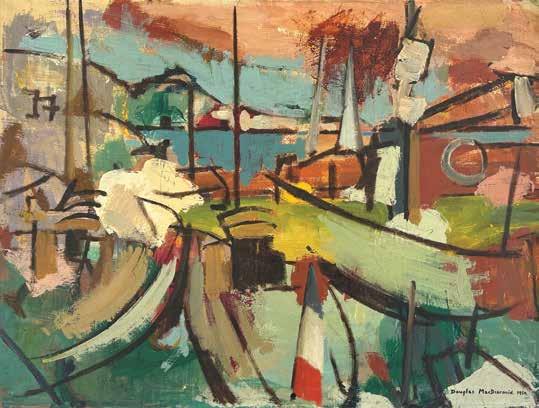
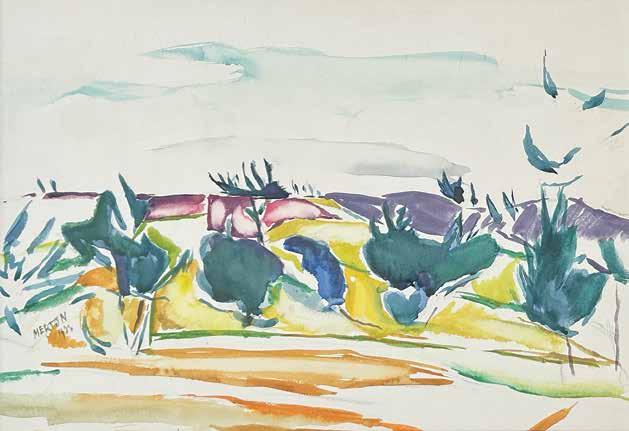
95
93
DOUGLAS MACDIARMID (1922 - 2020)
Window & Wall 1970
Oil on canvas 48 x 72
Signed & dated ‘70
$5,000 - 8,000
PROVENANCE
Private Collection, Wellington
94
DOUGLAS MACDIARMID (1922 - 2020)
The Harbour, French Riviera 1954
Oil on canvas 46 x 61
Signed & dated 1954
$4,000 - 6,000
PROVENANCE
Private Collection, Australia
95 OWEN MERTON (1887 - 1931)
Untitled
Watercolour 36 x 50
Signed & dated 1922
$5,000 - 8,000
PROVENANCE
Private Collection, USA

Coastal
Watercolour
Signed & dated 1922
$7,000 - 10,000
PROVENANCE
Private Collection, Auckland
Signed & dated 1973
$8,000 - 12,000
PROVENANCE
Private Collection, Wellington


Shipping on the Thames
Watercolour 49 x 63.5
Signed & dated 1910
$3,000 - 6,000
PROVENANCE
Private Collection, Auckland
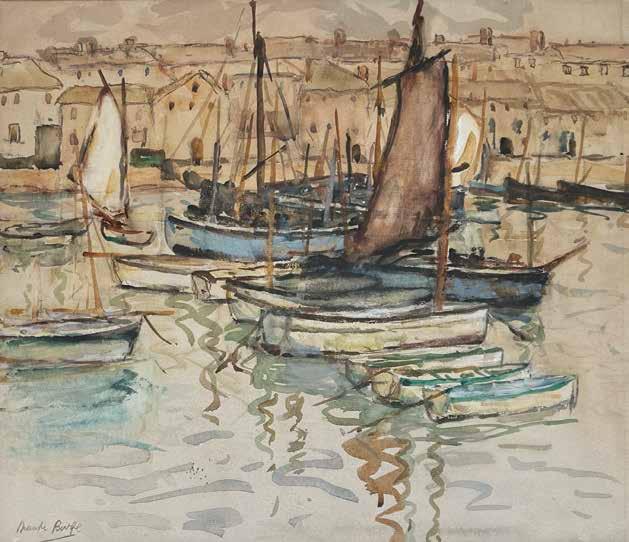
Watercolour 33.5 x 39
Signed
$3,000 - 5,000
PROVENANCE
Private Collection, Wanganui
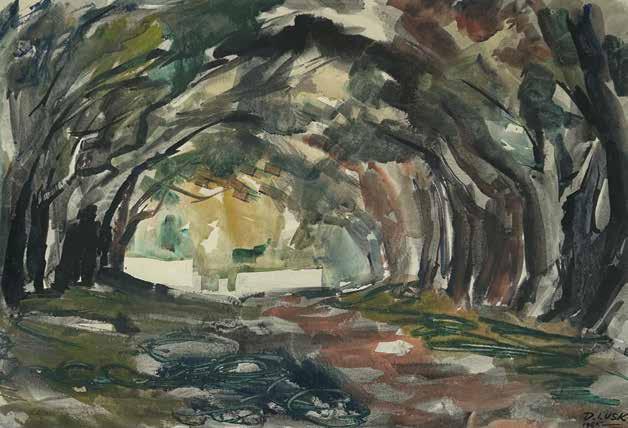
100 DORIS LUSK (1916 - 90)
Trees at Totaranui
Watercolour 36 x 53.5
Signed & dated 1965
$3,000 - 6,000
PROVENANCE
Private Collection, Auckland
EXHIBITED
Doris Lusk: Retrospective Exhibition, 14 - 31 August 1966, Dunedin Public Art Gallery
101 FRANCES HODGKINS (1869 - 1947)
Village Scene
Watercolour 25 x 17.5
Signed & dated 1901
Inscribed verso Foggy Evening, High Wycombe, First painting done in 1901
$10,000 - 15,000
PROVENANCE
Private Collection, Auckland
Mr HM Gore
REFERENCE
E H McCormick, Works of Frances Hodgkins in New Zealand, Auckland City Art Gallery, Auckland, 1954 p. 164
CATALOGUE NUMBER
FH0343
https://completefranceshodgkins.com/ objects/25812/village-scene

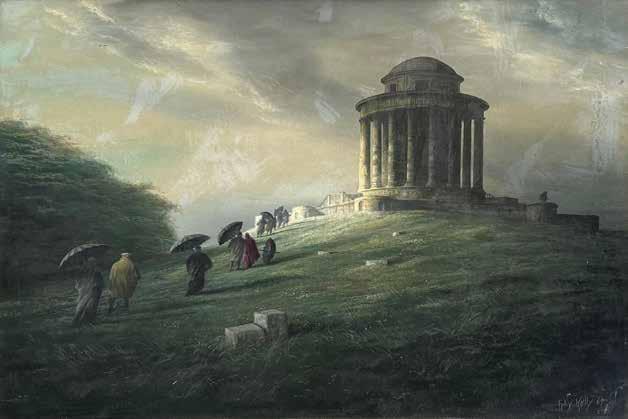

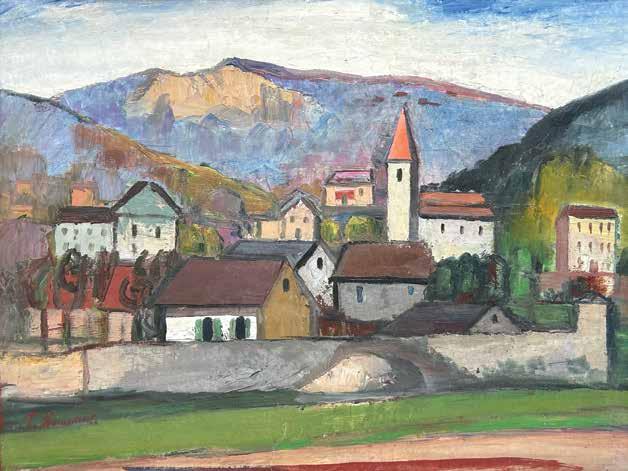
102 103 FELIX KELLY (1914 - 94)
Hawksmoor Mausoleum, Castle Howard, 1964
Oil on board 43 x 56
Signed
$8,000 - 12,000
PROVENANCE
Private Collection, Whanganui
EXHIBITED
Arthur Tooth & Sons Ltd, Felix Kelly: Recent Paintings, 26 October-13 November 1965 cat. No 26, 31 Bruton Street, London
JOHN GIBB (1831 - 1909)
Brighton Beach Christchurch, New Zealand
Oil on board 55 x 99
Signed & dated 1889
$10,000 - 15,000
PROVENANCE
Private Collection, Australia
104 FRANZ DOMSCHEIT (Prussian 1880 - 1965)
Untitled, Landscape Oil on canvas, double sided 61 x 81.5
Signed
$8,000 - 12,000
PROVENANCE
Private Collection, Christchurch

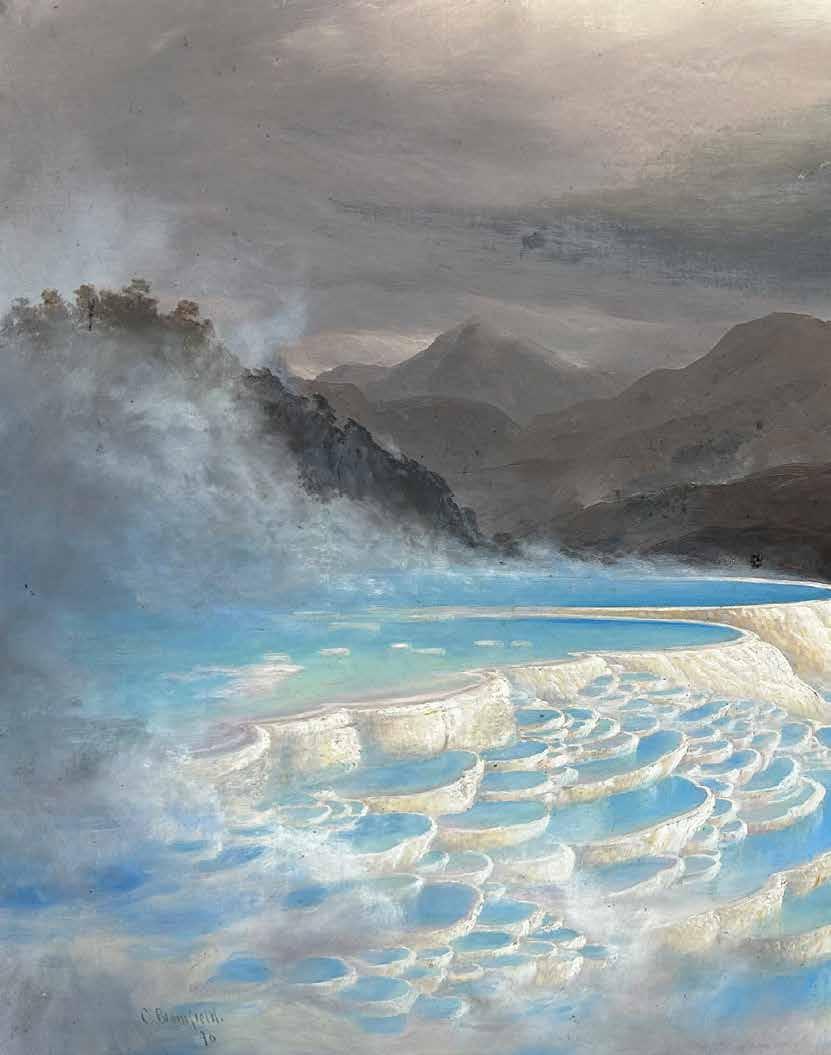
6:00pm Tuesday 30 July 2024

I instruct International Art Centre to bid on my behalf for the following lots up to the prices indicated below. I understand my bids are to be executed at the lowest attainable price level. All bids are subject to Conditions of Sale printed in this catalogue.
REGISTRATION NUMBER
NAME
ADDRESS
TELEPHONE
We will allocate a bidding number if you don’t already have one
Signature ........................................................................................... / / 2024
I have read and understand the Conditions of Sale. International Art Centre offers this service to clients unable to attend sale and is not responsible for error or failure to execute bids.
Email to info@internationalartcentre.co.nz before 3pm day of sale
Alternatively, visit our website www.internationalartcentre.co.nz and place absentee bids online or our bidding platform to participate in the auction live and remotely https://auctions.internationalartcentre.co.nz
The highest bidder shall be the buyer. In the event of any dispute as to the bidding in respect of any lot, that lot may be offered again at the discretion of the auctioneer whose decision shall be absolute and final.
The auctioneer has the right -
(i) to refuse any bid;
(ii) to advance the bidding at his absolute discretion;
(iii) to place a reserve on any lot;
(iv) to place a bid or bids on behalf of the seller;
(v) to withdraw any lot from sale;
(vi) to require a successful bidder to pay forthwith the whole or any part of the purchase price.
The auctioneer acts as the agent of the seller and neither he nor the seller shall be responsible for any defects or faults in any lot or for any errors of description or for genuineness or authenticity of any lot and no compensation shall be paid in respect of same.
From the time of lot being sold, such lot will be the responsibility of the buyer.
Successful bidders are required to pay for purchases immediately on completion of sale unless otherwise arranged.
All intending buyers are required to register for a bidding number prior to auction commencing. Subscribers can use their permanent bidding number. We reserve the right to ask for identification if you are a first time client of International Art Centre.
Each lot shall be paid for and removed at the buyers expense by no later than 4:00pm Friday 2 August 2024 unless otherwise arranged failing which the auctioneer and/or the seller shall have the right to forfeit any deposit paid by the buyer and to resell the lot either by public or private sale and any deficiency on costs of resale shall be borne by the defaulting buyer.
No lot may be collected whilst auction is in progress. Payment can also not be made until completion of auction.
When the auctioneer declares a lot ‘subject’ this means the bid is below the set reserve and is subject to vendor accepting, rejecting or negotiating the bid. International Art Centre will endeavour to make contact with the vendor immediately after sale or the following day. If the bid is accepted, the highest bidder is obligated to make purchase.
Estimates are provided for each entry and act as a guide only. They are prepared well in advance of sale and are subject to revision at any time. Estimates are based on hammer price and do not include buyers premium.
Absentee bidding arranged - please refer to absentee bidding in back of catalogue. Email to info@internationalartcentre.co.nz before 3pm day of sale. Please do not be offended if a member of our staff ask for your credit card details as security.
Absentee bids can also be left via our website to registered members. Our website www.internationalartcentre.co.nz acts as a useful auxiliary to the catalogue but we recommend inspection or a condition report prior to leaving a bid. Our staff will gladly supply you with a condition report on any lot.
Telephone bidding available to subscribers and registered bidders. There is no charge for this service.
Eftpos: Available for transactions depending on your daily limit.
Bank deposits: Bank instructions on invoice if paying by direct debit. Quote the Lot number(s) purchased and surname as reference.
Credit cards: Visa and Mastercard with a 2% surcharge.
International Art Centre no longer accepts cheques.
PROTECTED OBJECTS ACT
Art objects over 50 years old made by an artist or maker born in or related to New Zealand may be protected New Zealand objects, and therefore require permission from the Ministry for Culture and Heritage in order to be exported. Applications for permission to export can be made at https://mch.govt.nz/nz-identity-heritage/ protected-objects/exporting
FREIGHT & PACKING
International Art Centre arrange door to door delivery both nationally and internationally. Please arrange insurance on your items prior to them leaving our premises. Uber deliveries within the wider Auckland area can also be arranged.
Should you have any questions relating to the sale or if we can be of any other assistance please contact us during business hours on (09) 379 4010, Toll Free 0800 800 322 or email info@ internationalartcentre.co.nz
18.5% Buyers premium plus GST on premium applies to all lots. (Total buyers premium is 21.21% including GST)

BARRAUD C D 64, 65, 66, 67, 68, 69, 70, 71, 72, 73, 74, 75
BINNEY D 50
BIRCH I T 24
BLOMFIELD C 63, 76, 81
HODGKINS F 48, 101
R H .................... 27, 28, 36, 51, 52
HOYTE J B C 77, 78, 79
K 18, 35
C 10, 59
P 83, 48, 83, 84, 85, 86, 87, 88, 89, 90
O 95, 96, 98
B 21, 22, 23
S .......................................... 19, 20
PARDINGTON F 39, 40, 41, 42 PAREK W M 1


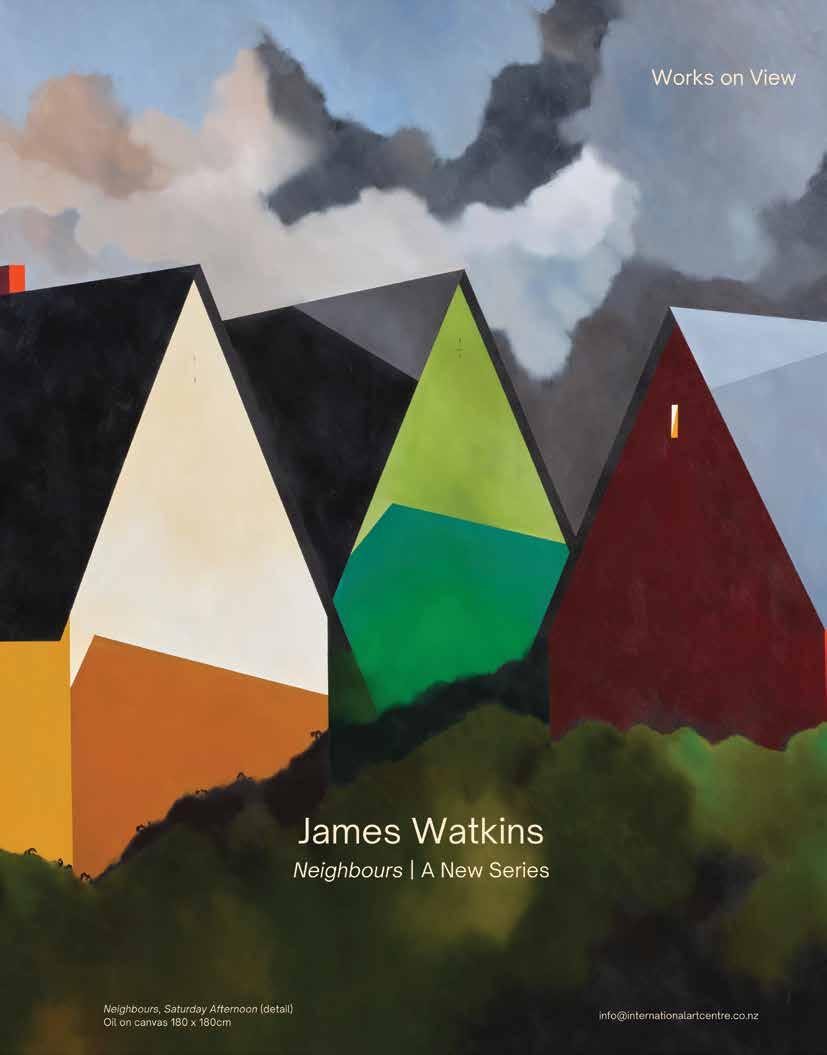

23 May —11 August
New Zealand Portrait Gallery Te Pūkenga Whakaata
Shed 11, Queens Wharf, Wellington
Open everyday 10AM– 4:30PM



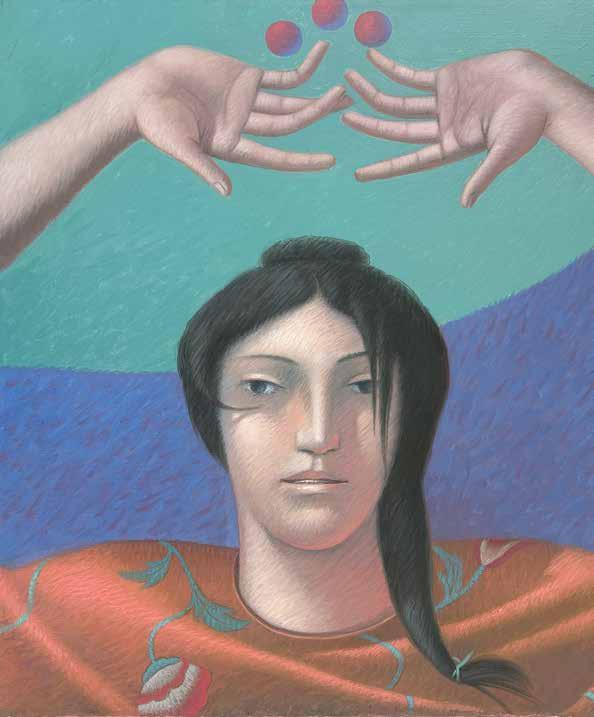

From time to time, the secondary market is fortunate enough to be exposed to one of those rare collections which transcends the value of its individual works of art, and stands to represent something iconic in its entirety. Our team is well-versed in the process of offering single-owner collections for sale, and take pride in the process of curating a single-owner sale when the opportunity arises. We offer a targeted marketing campaign and maximise the use of both electronic and print-based collateral to effectively showcase such collections to maximum effect. The strong networks we have established locally and internationally are reflected in some of the private collections which have been entrusted to us.
Our frequent Collectable online auctions provide excellent opportunities for both buyers and sellers alike. This increasingly popular sales category brings to market a wide range of diverse works from early topographical to the latest in contemporary art. Lower-priced works from sought-after artists in print and edition form, along with ceramics and sculpture are catalogued online and available for viewing at our Parnell premises. Online registration and bidding via our bidding platform.
Our Important & Rare auctions are the proven, pre-eminent sale category for major works of art sold in New Zealand to a global clientele. Important & Rare auctions are held quarterly. The offerings are promoted extensively through our online platform and the publication of well-researched catalogues sent to committed collectors worldwide.
Richard Thomson richard@artcntr.co.nz Mobile 0274 751 071
Grace Alty - gracealty@artcntr.co.nz
Luke Davies - luke@artcntr.co.nz
Grace Harris - grace@artcntr.co.nz
